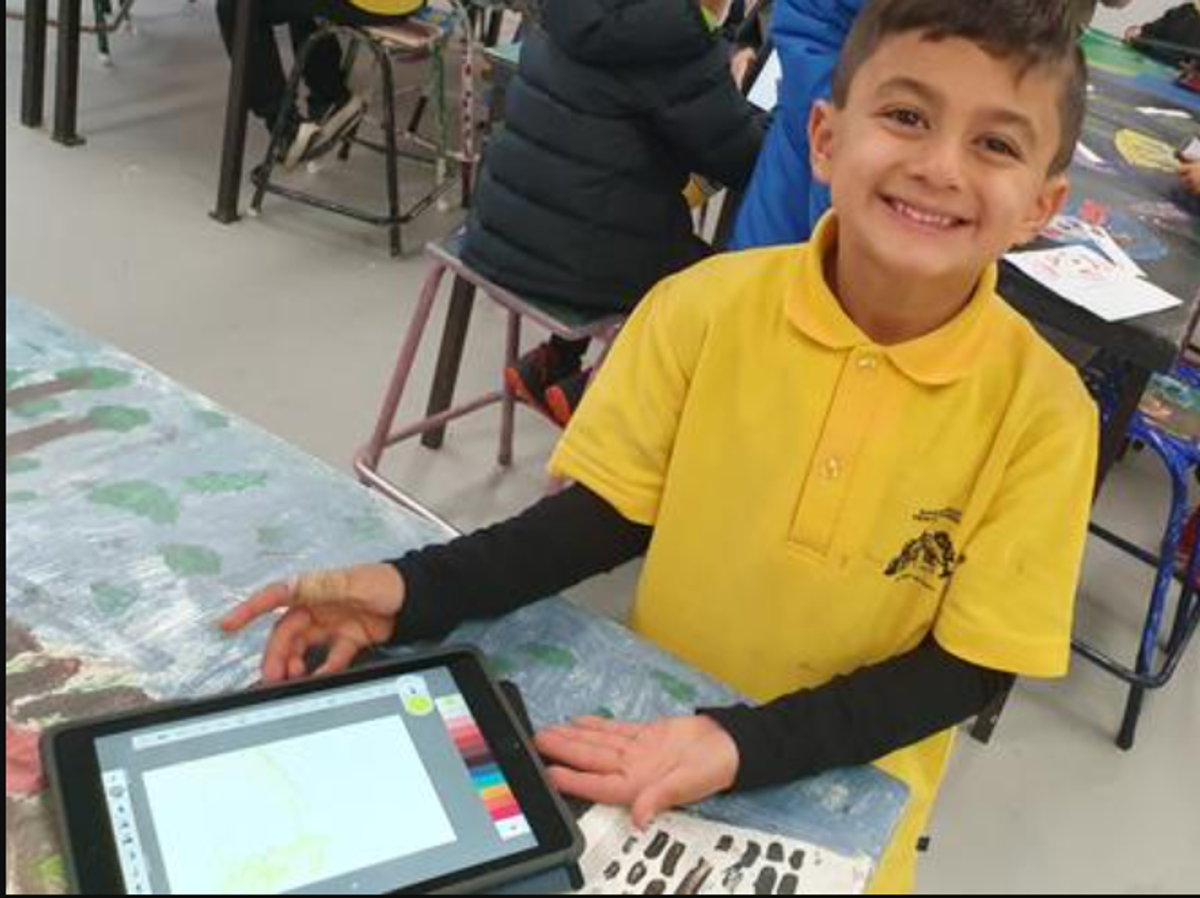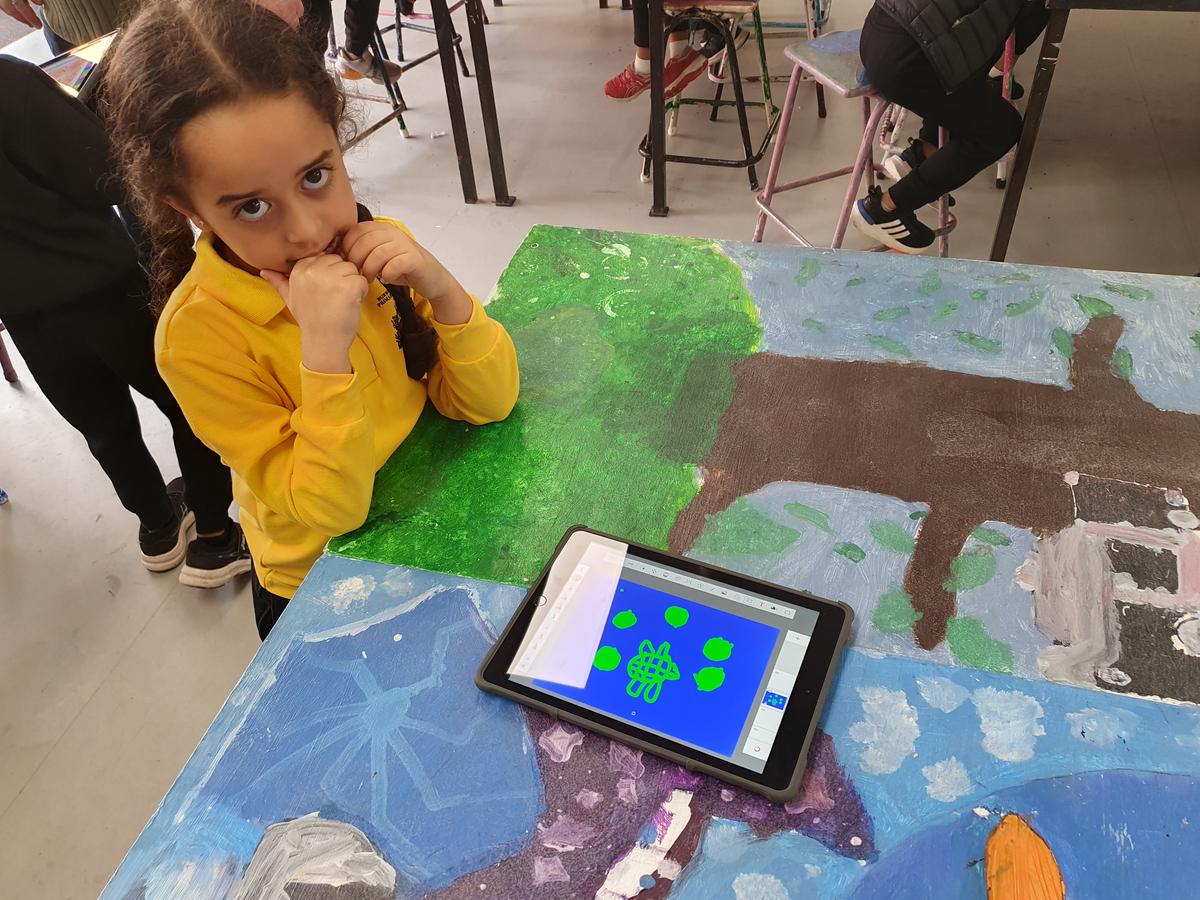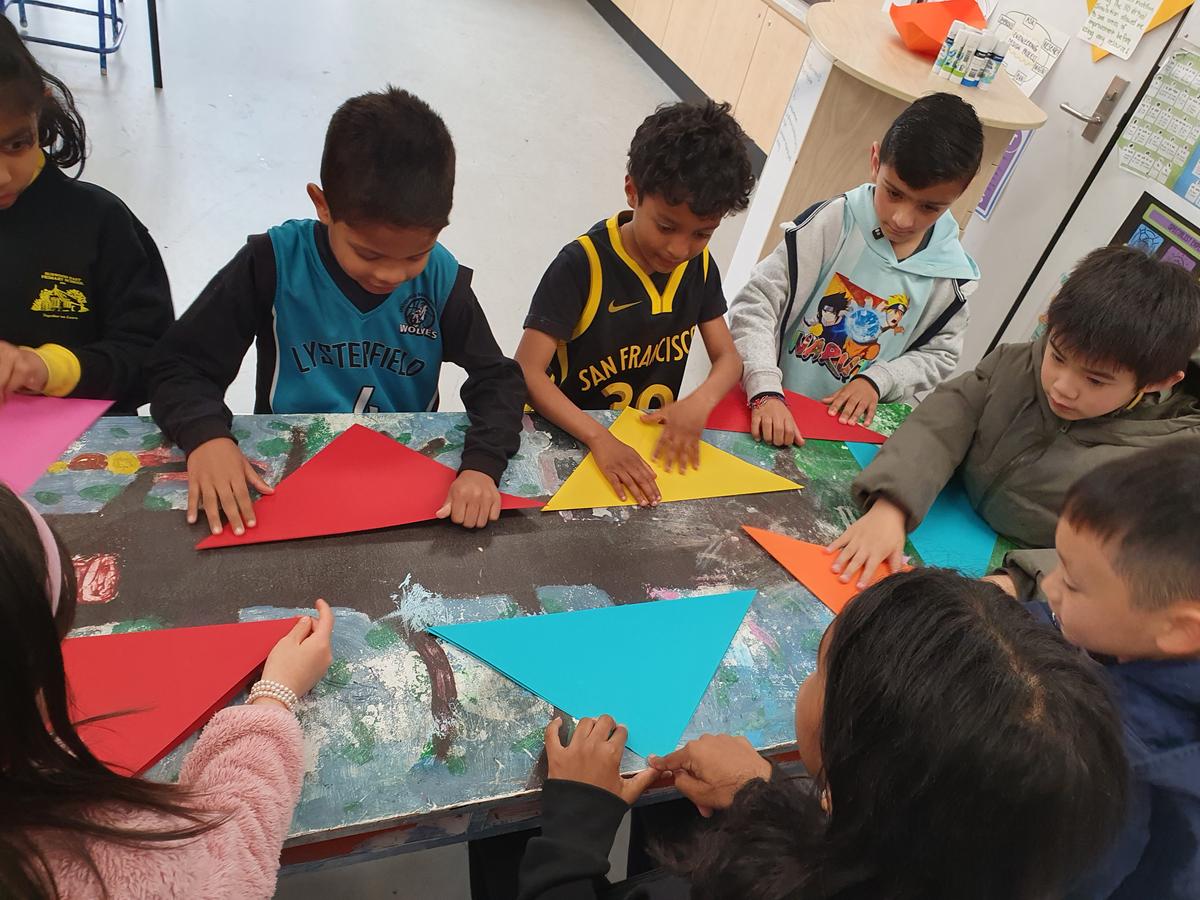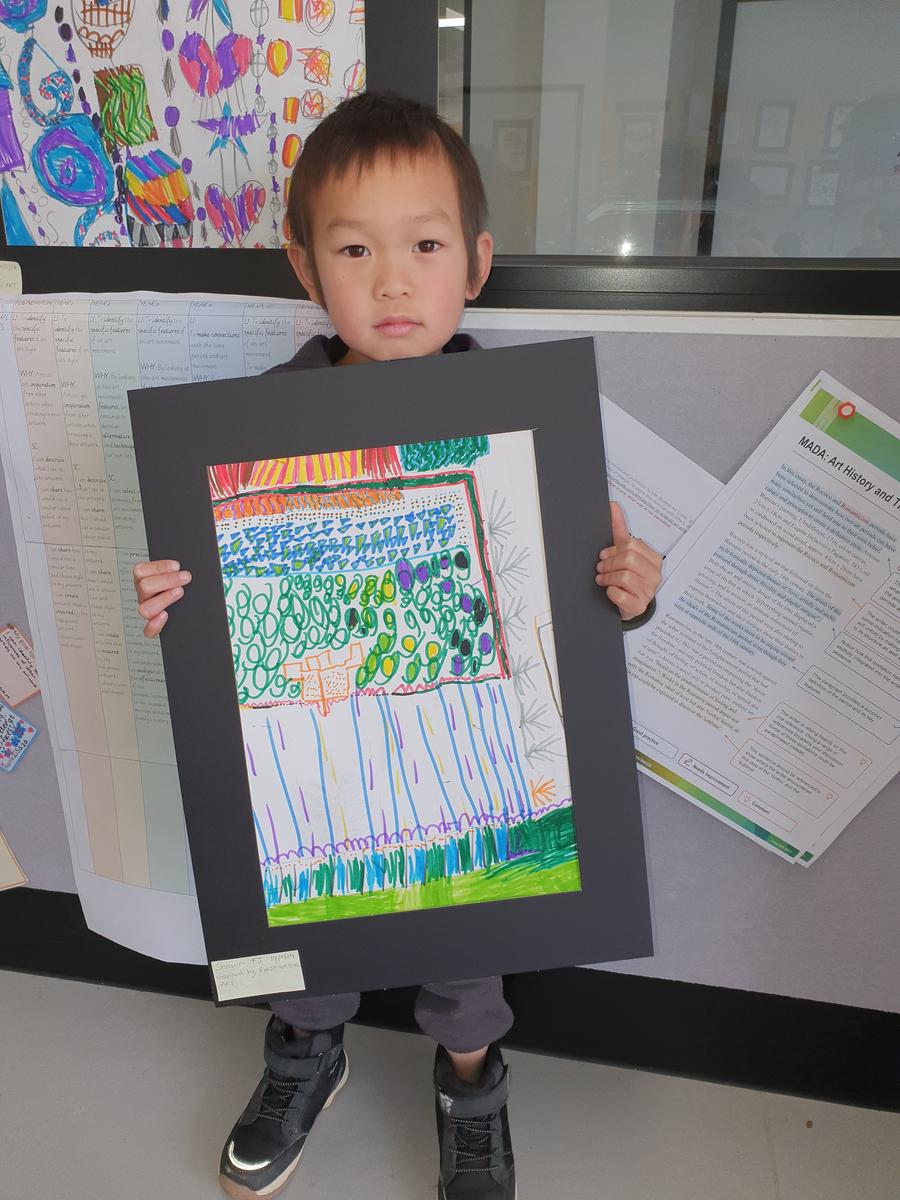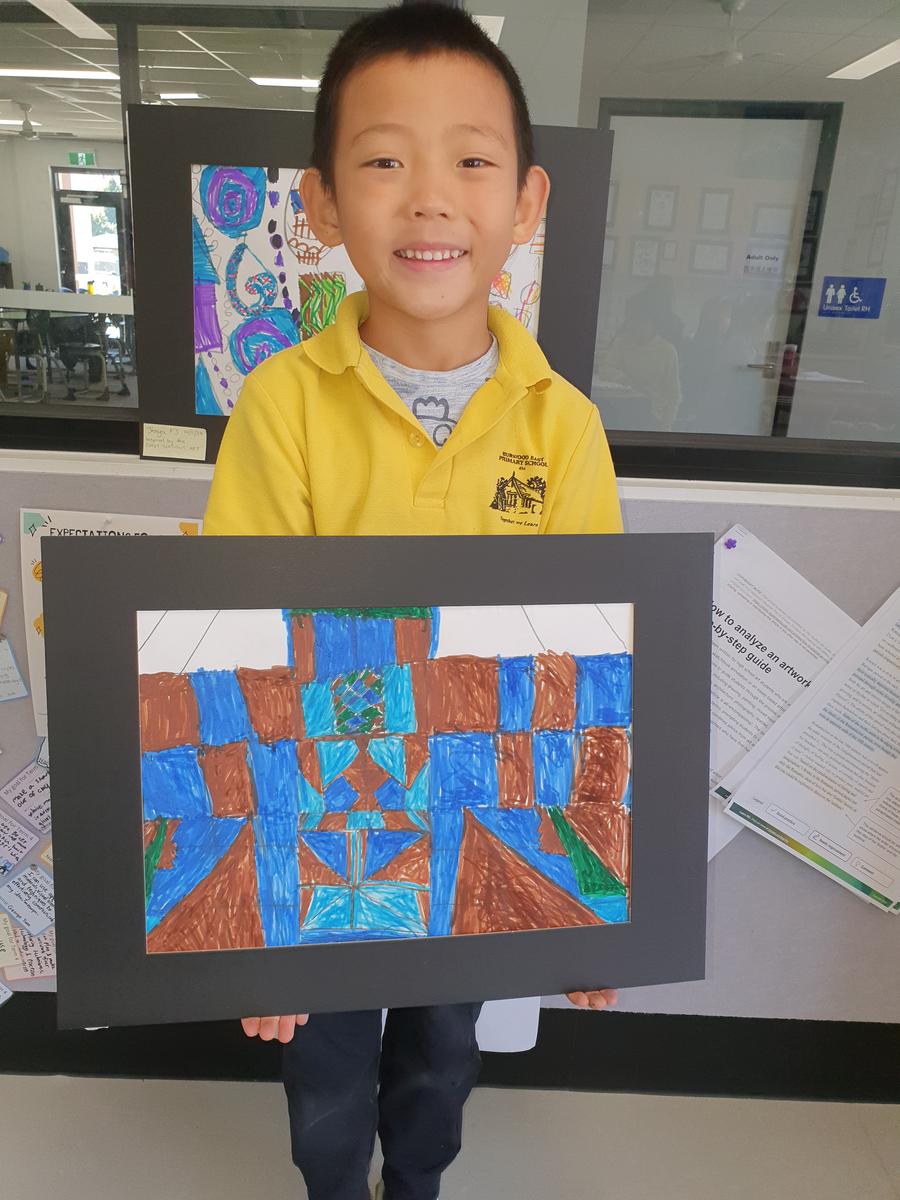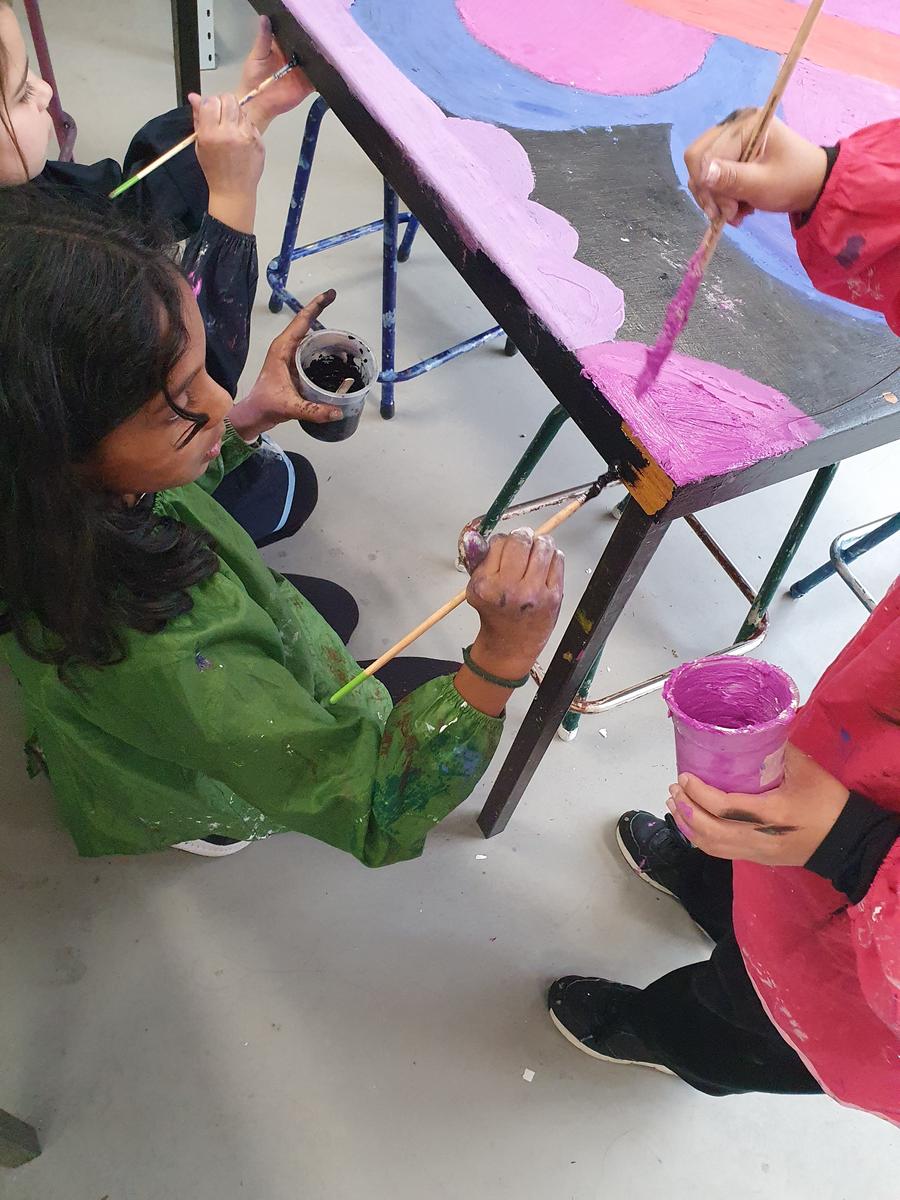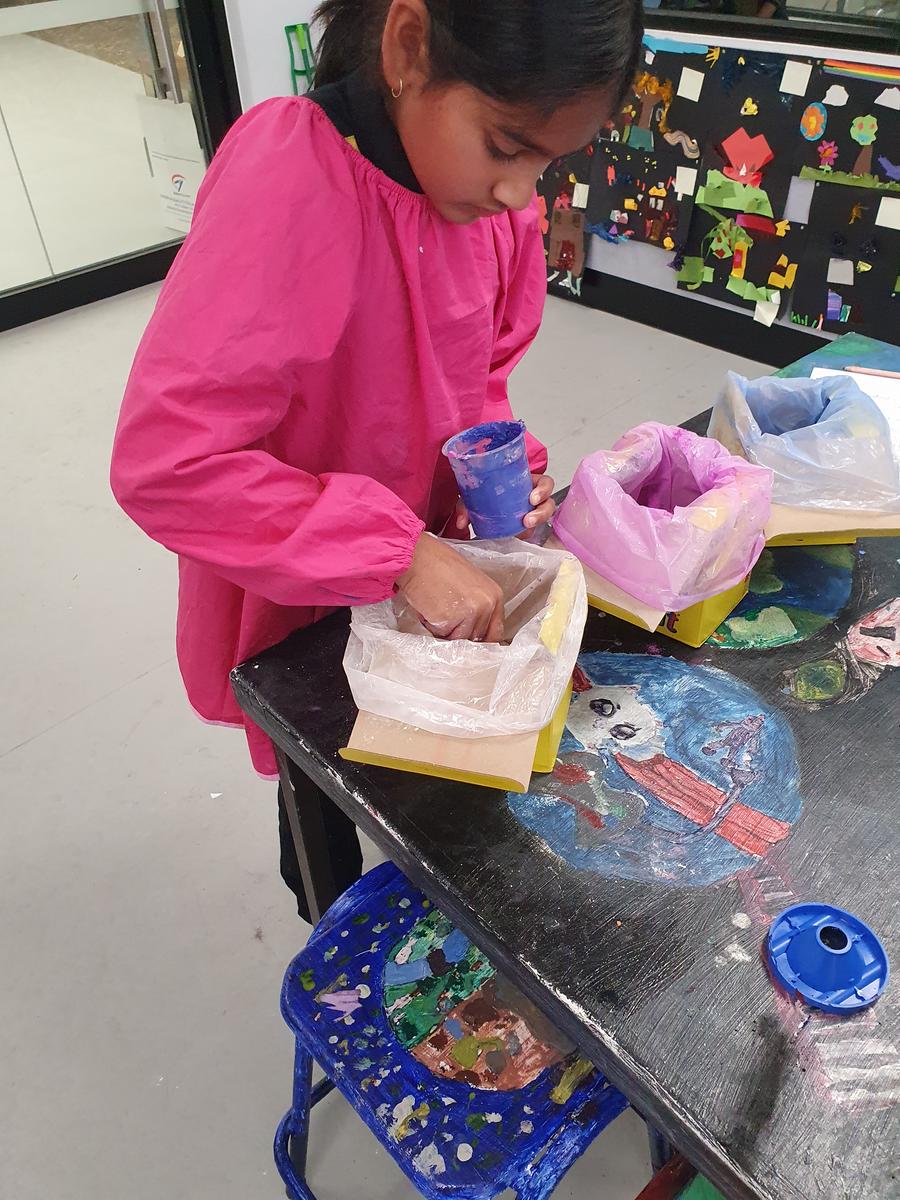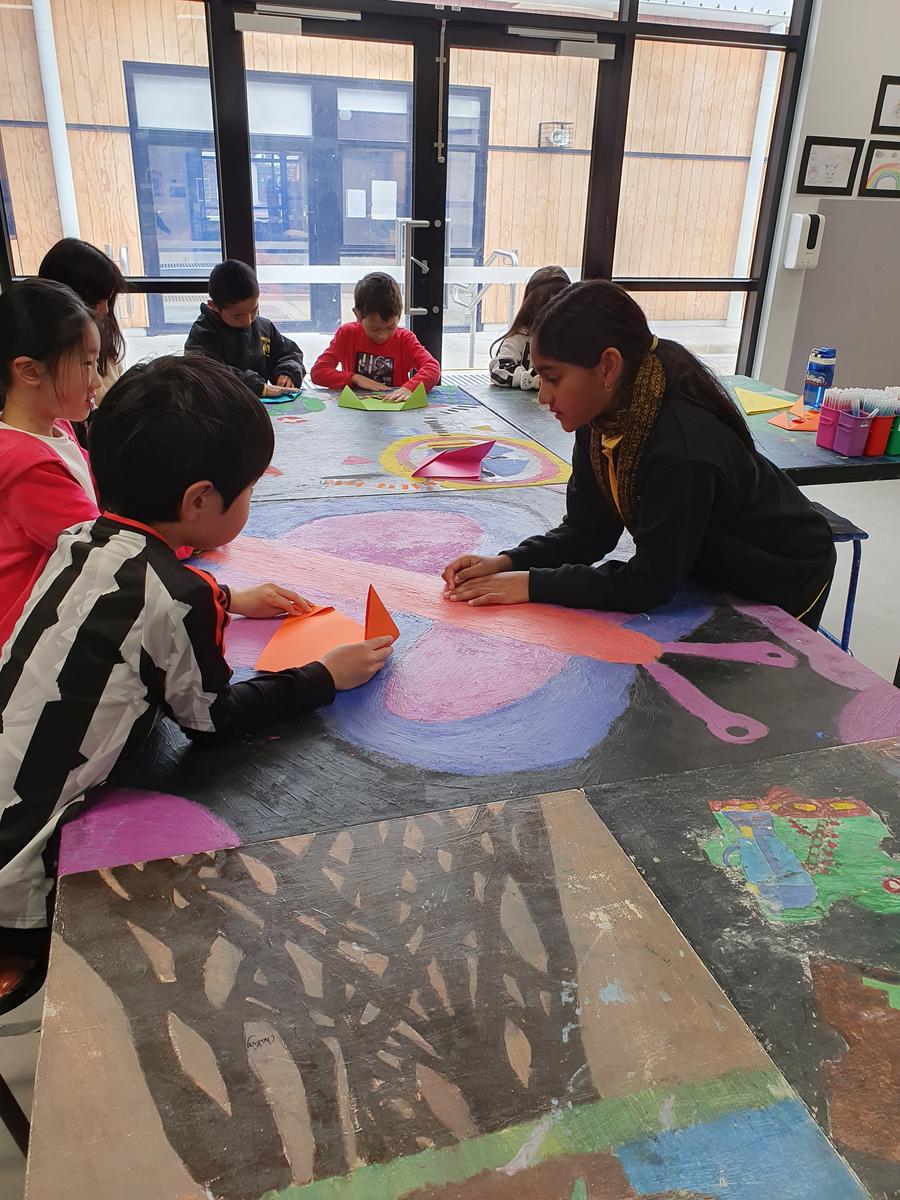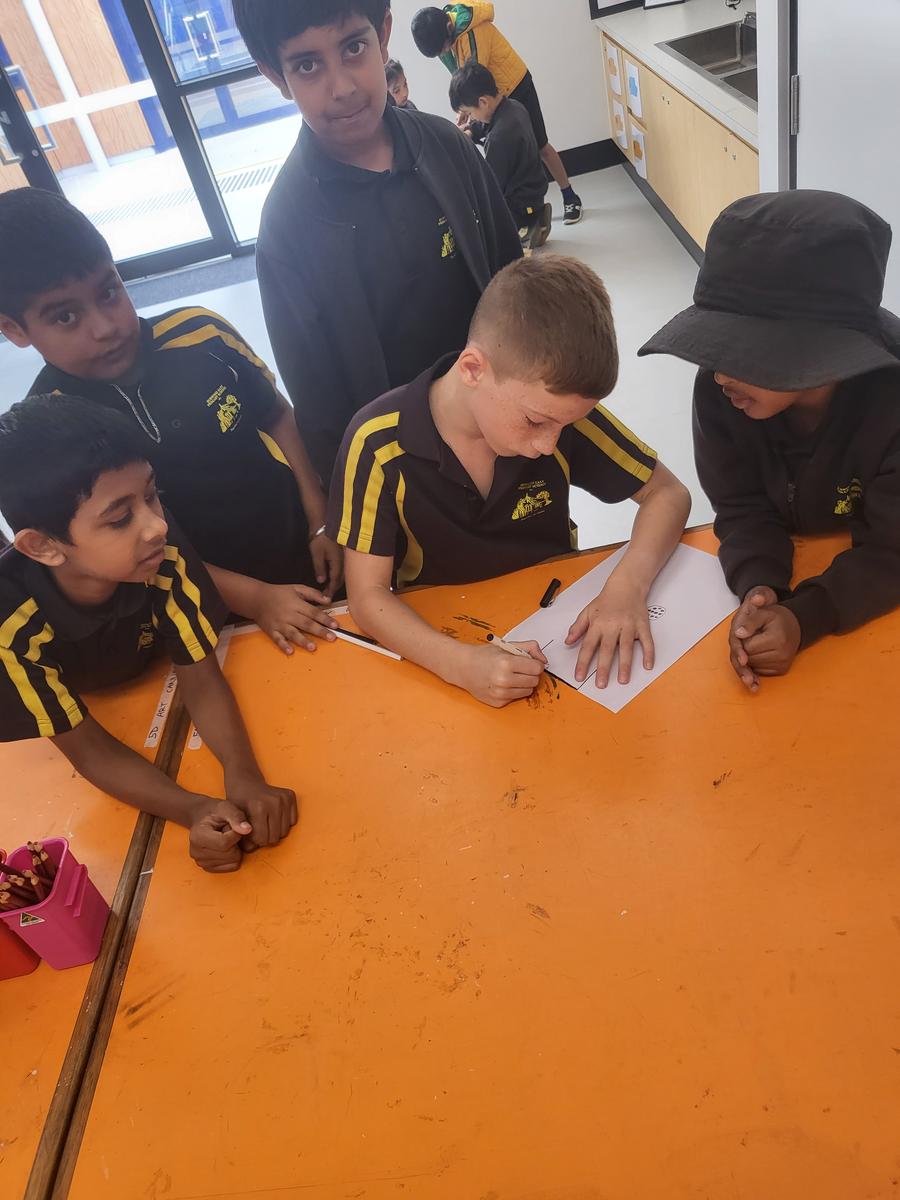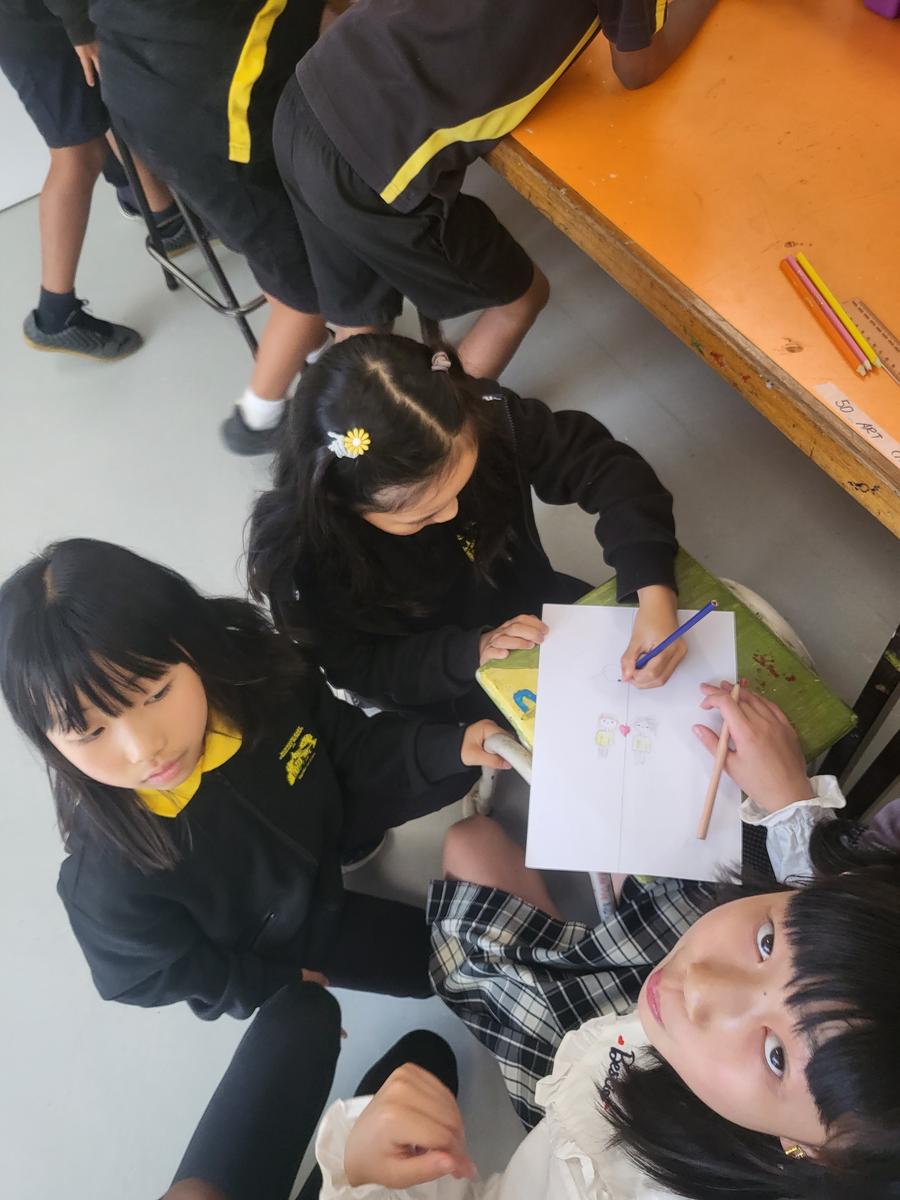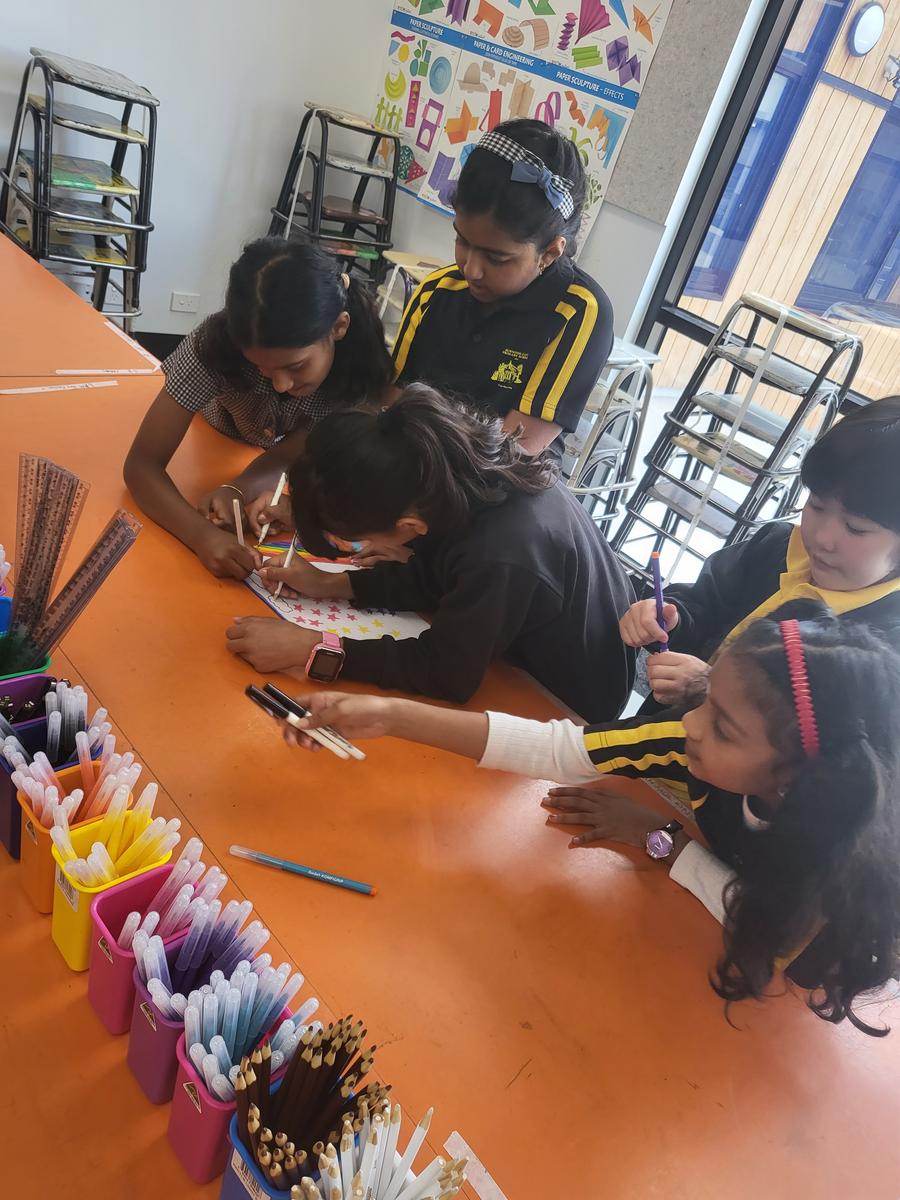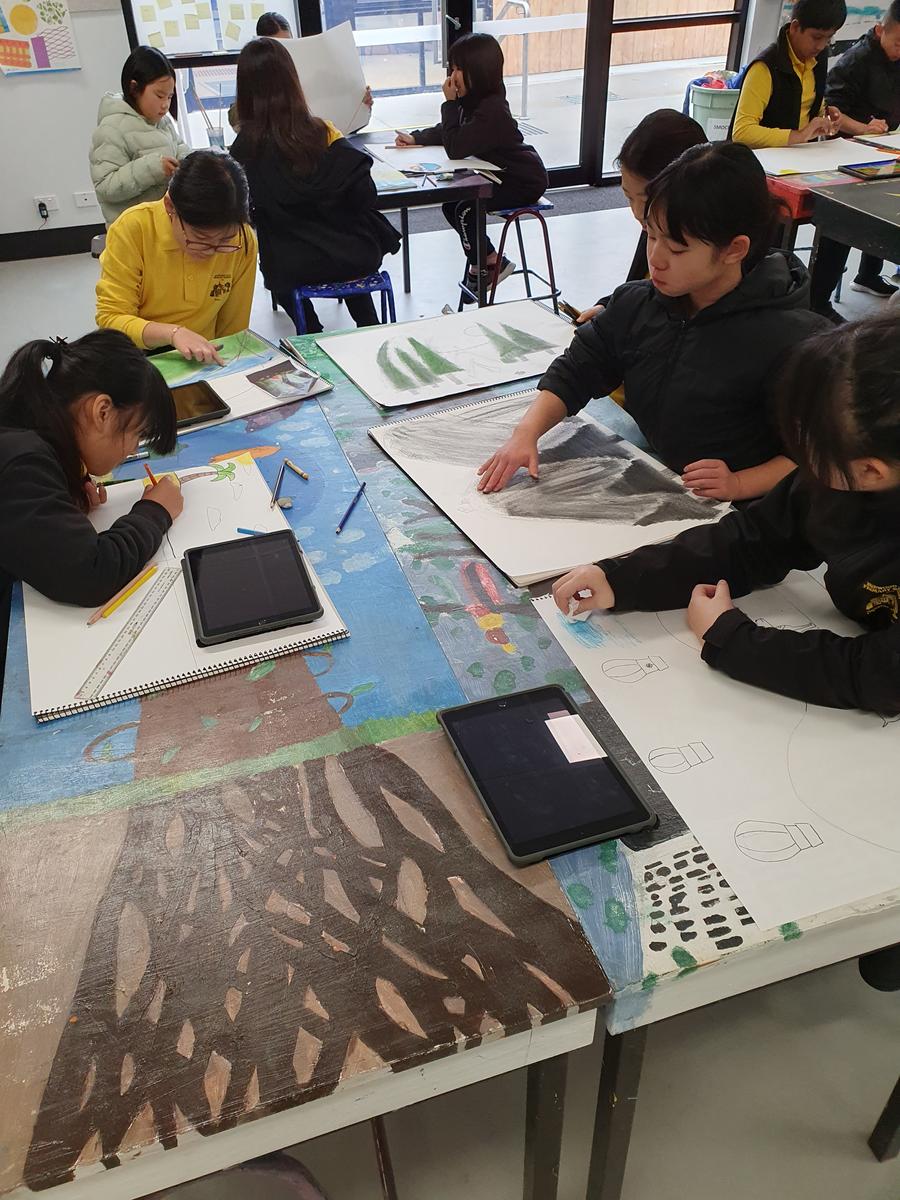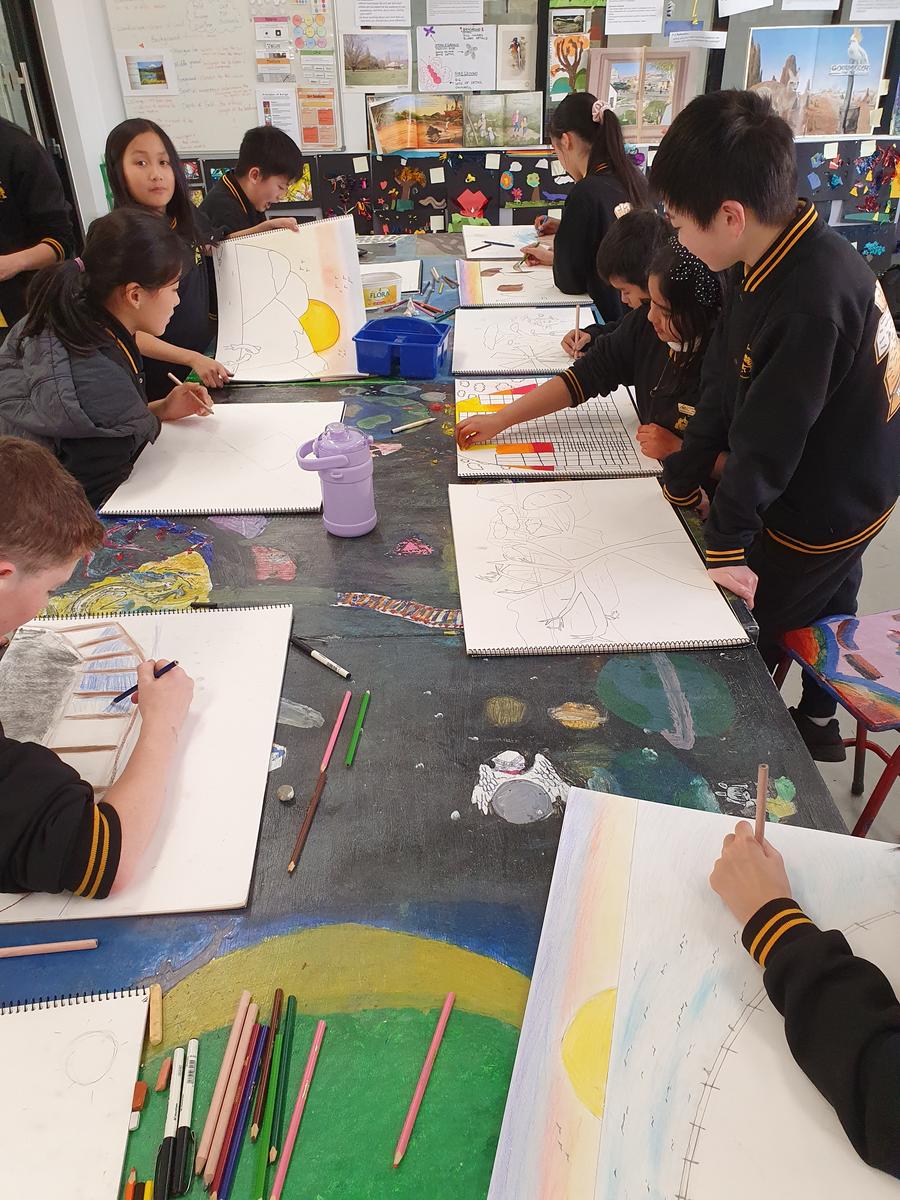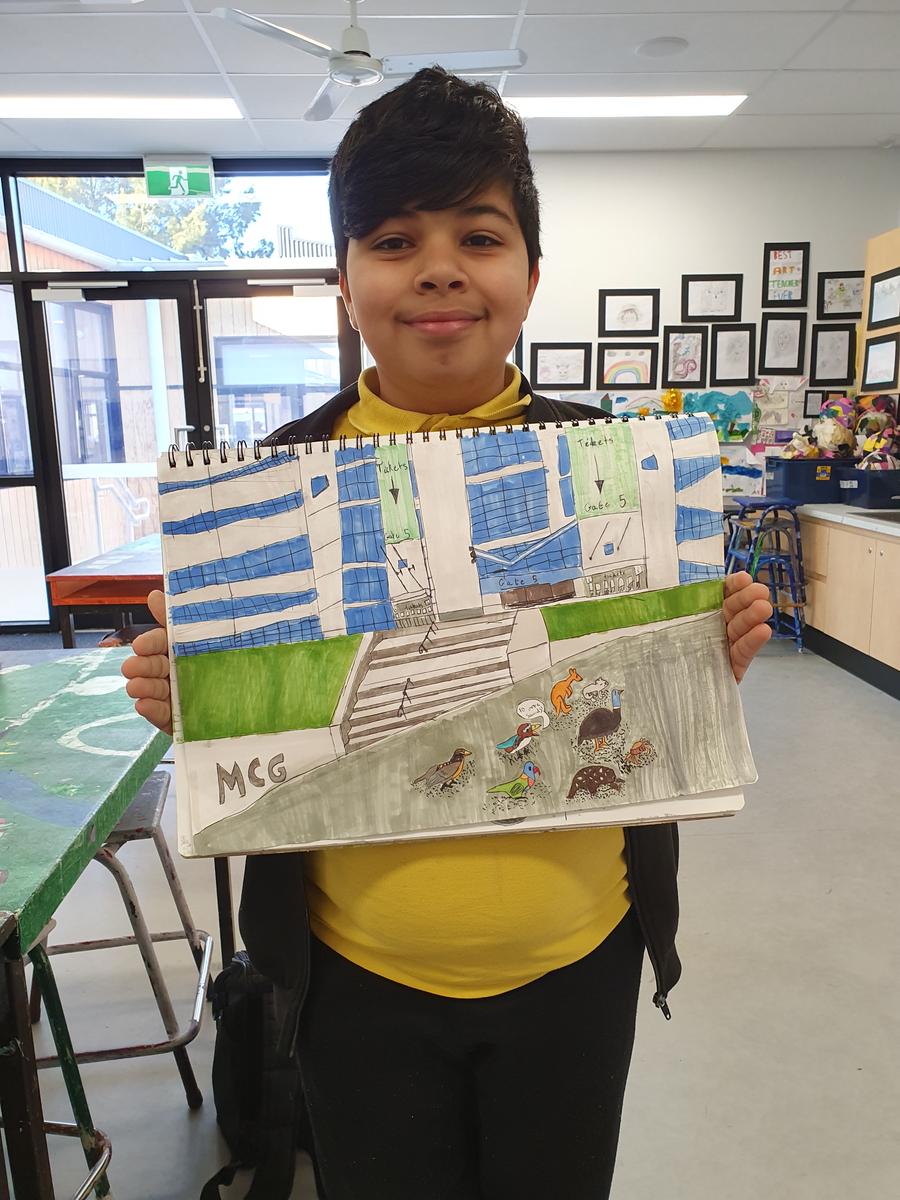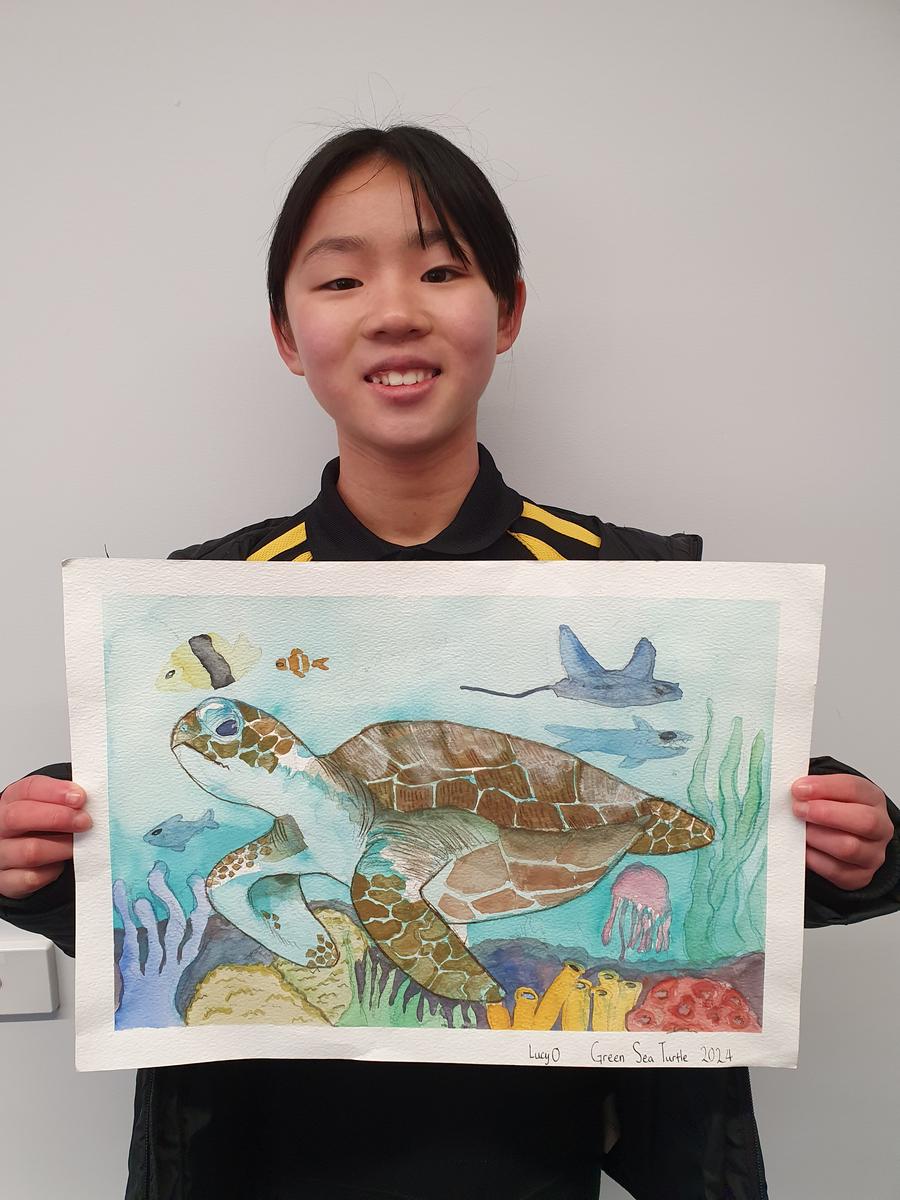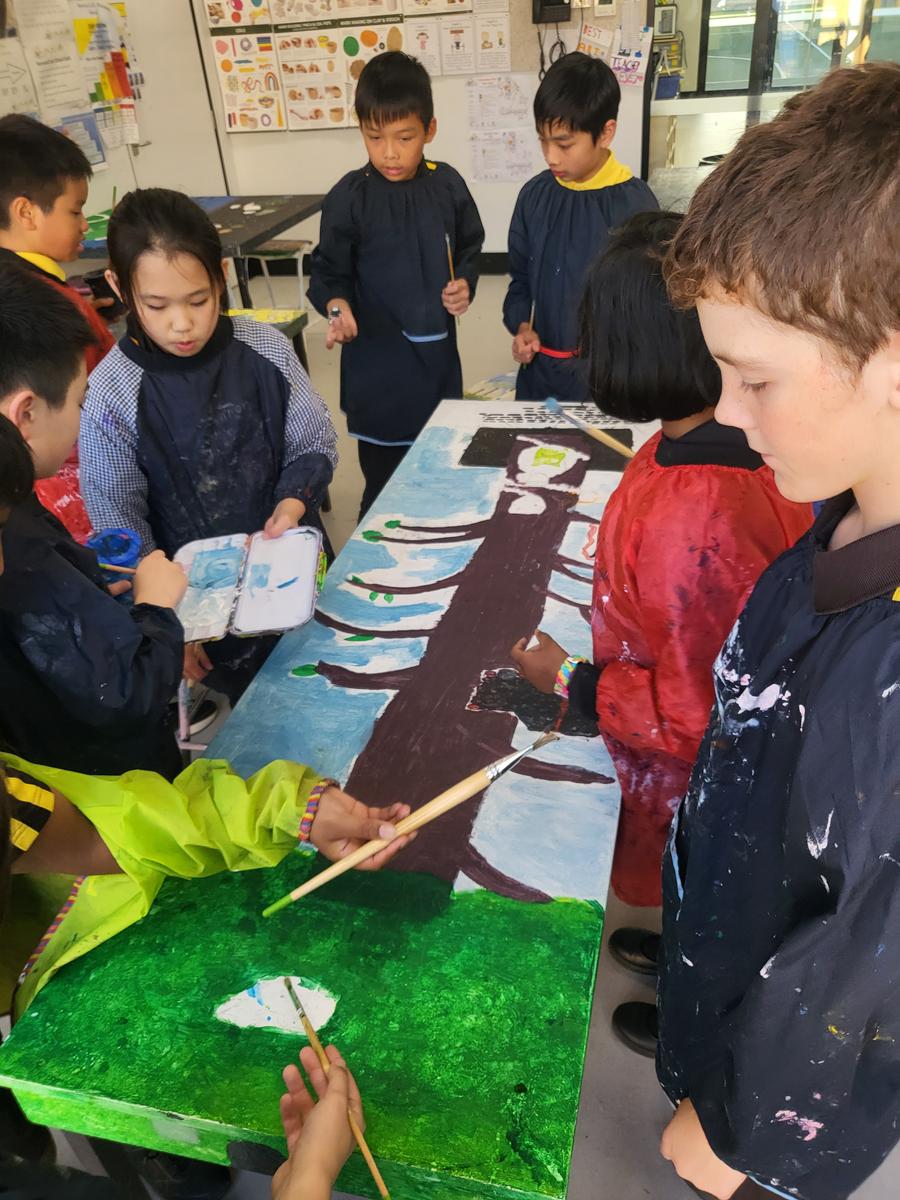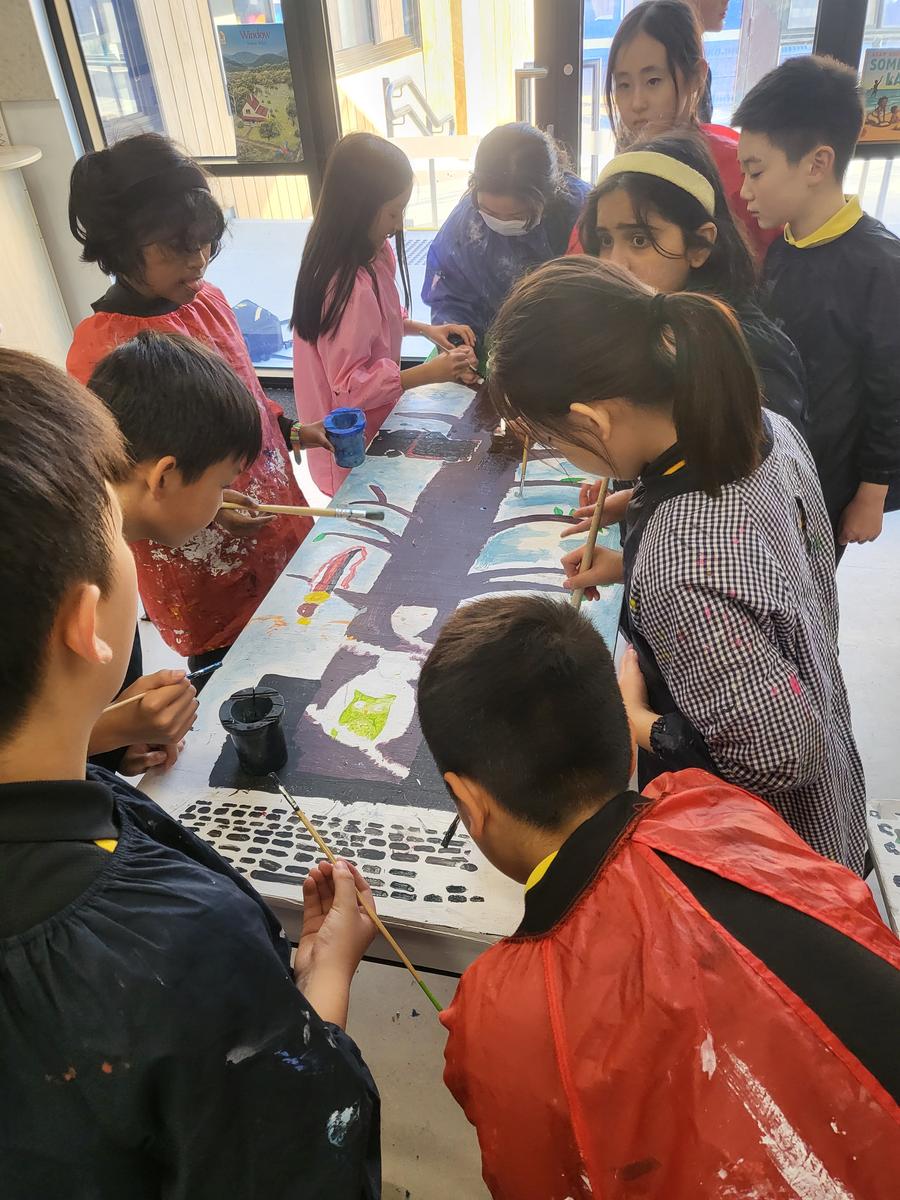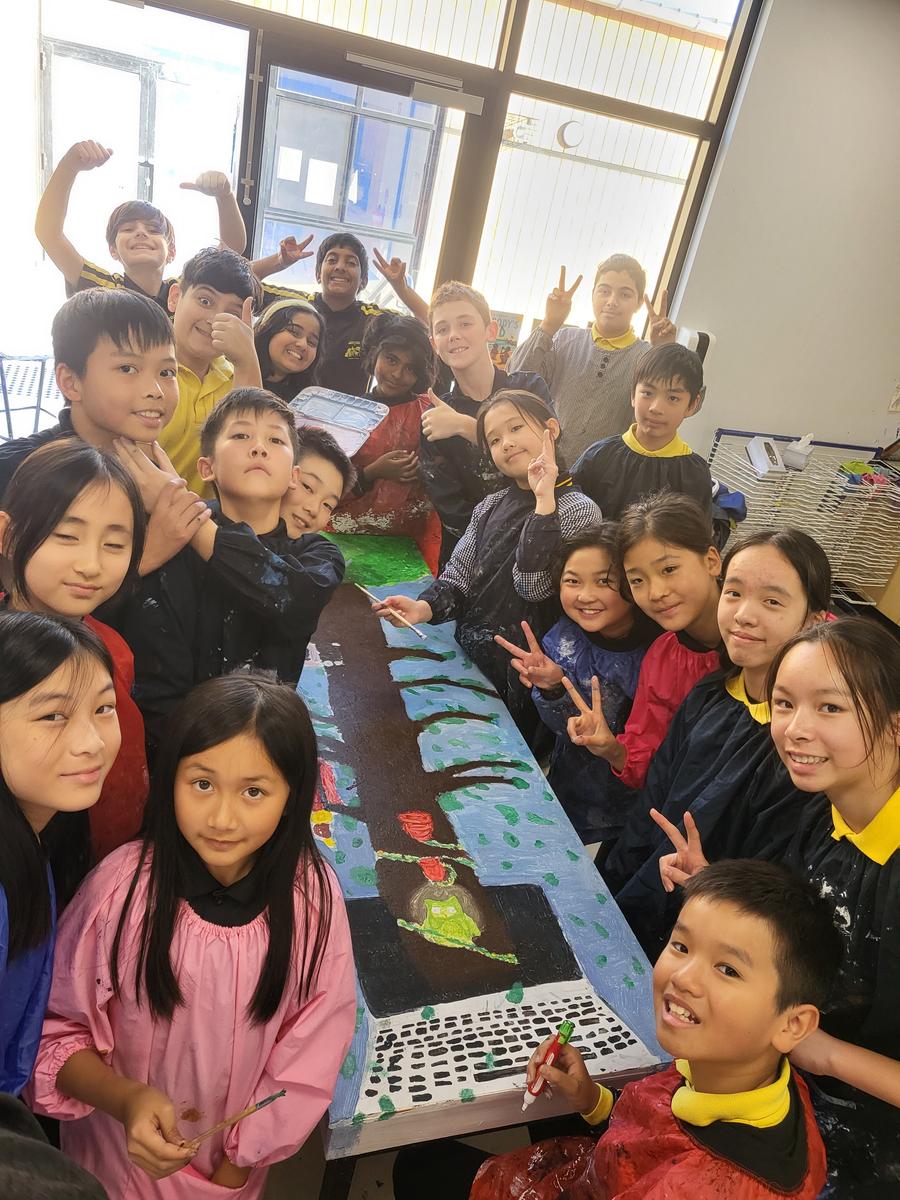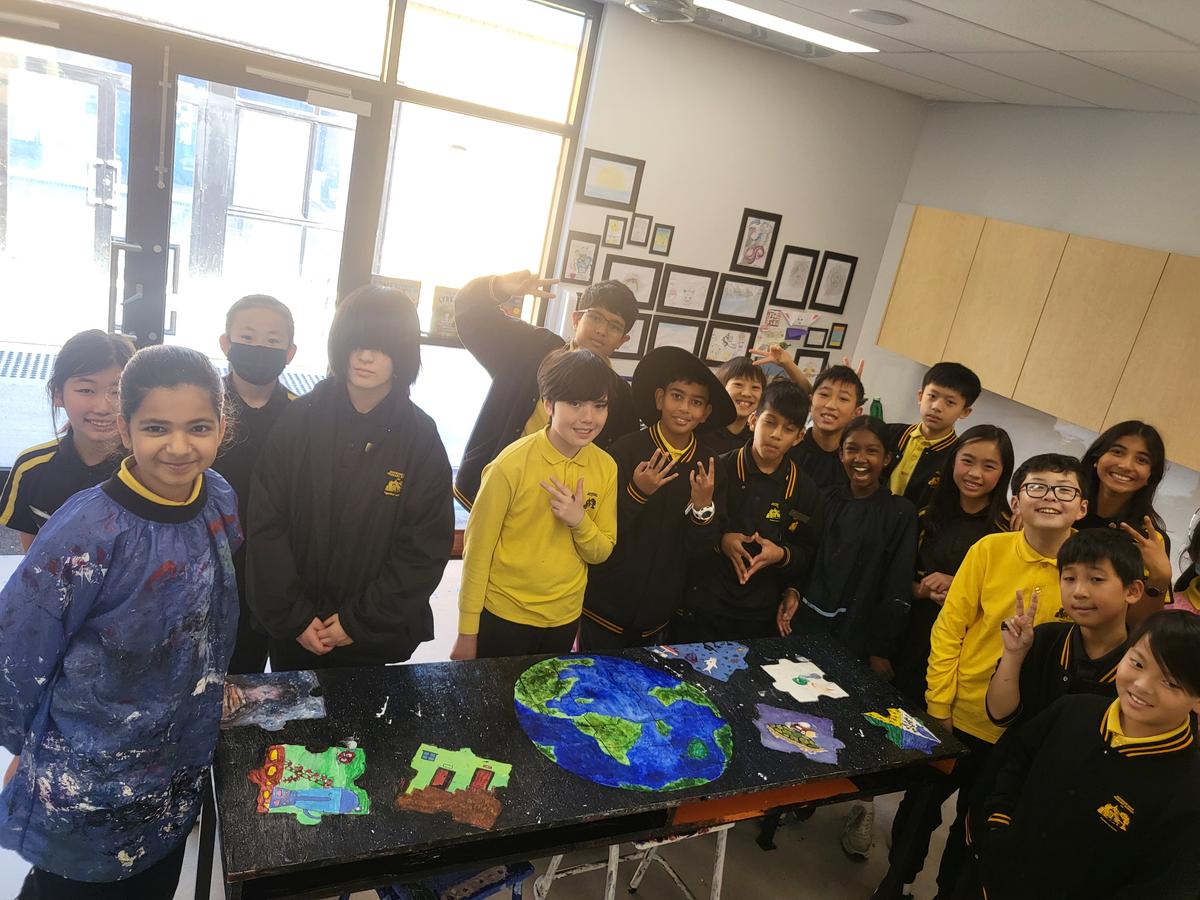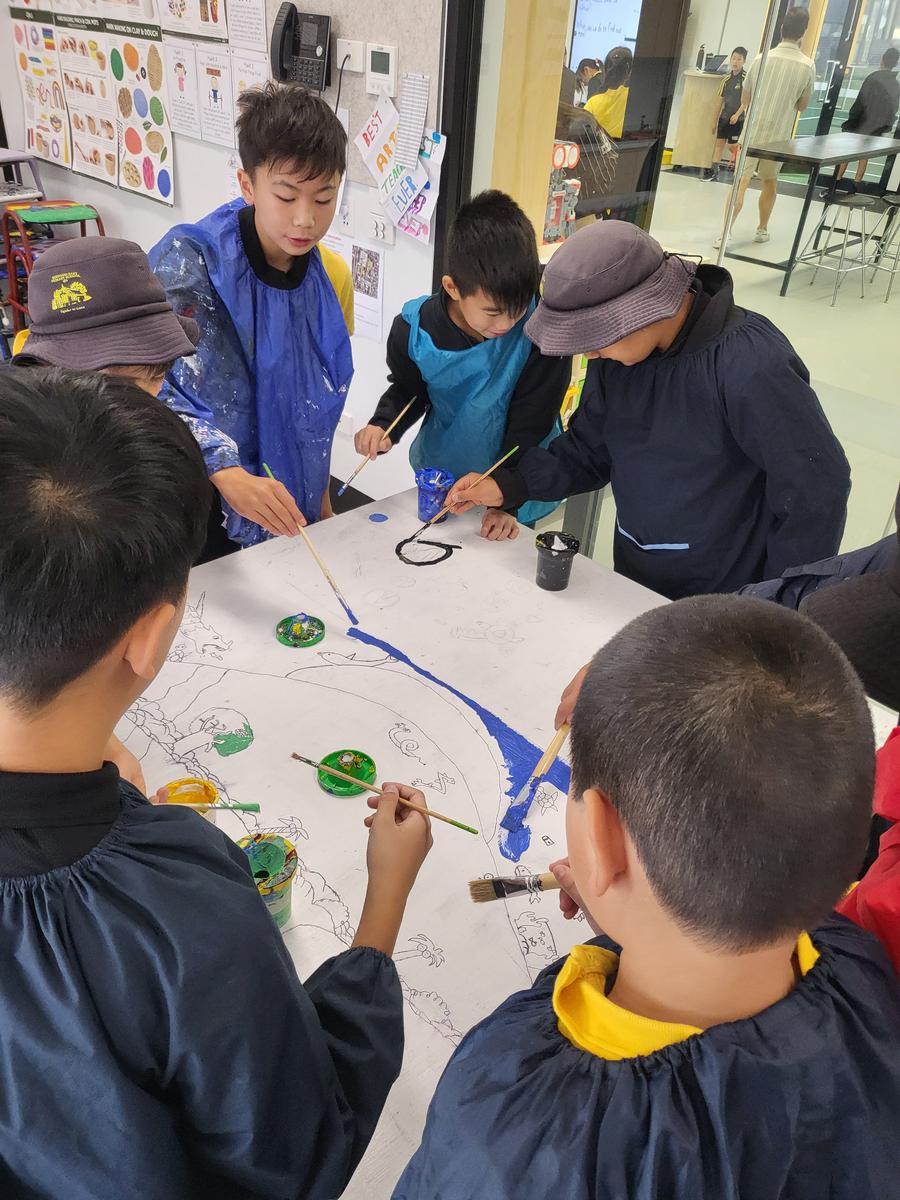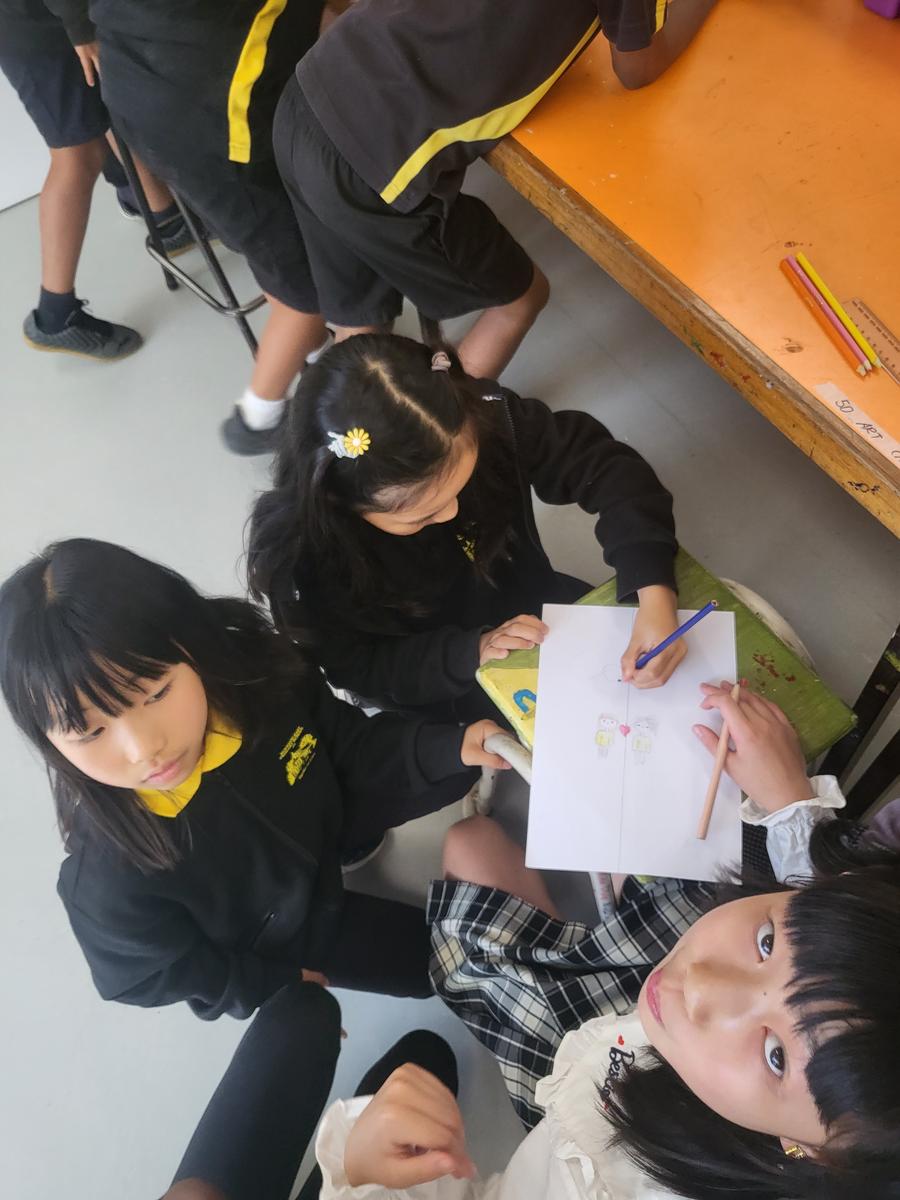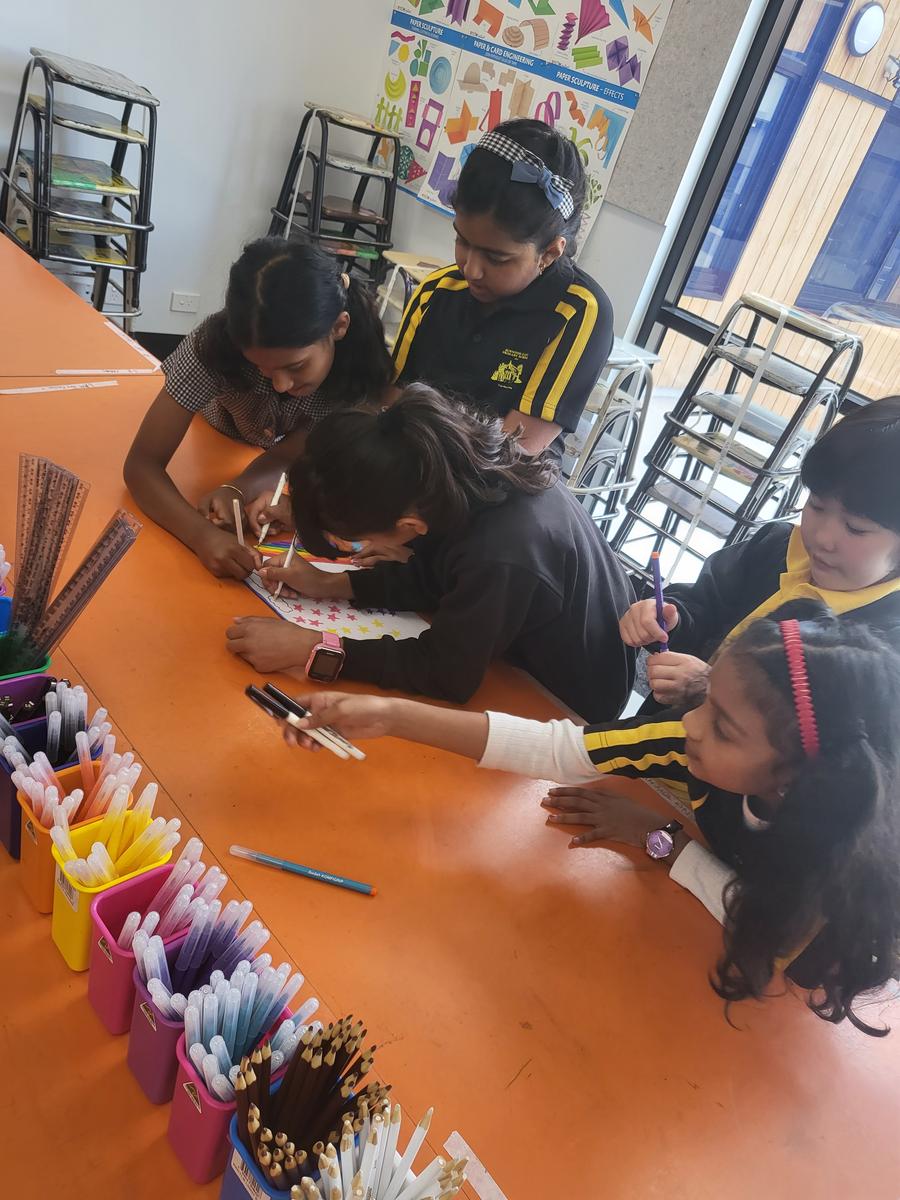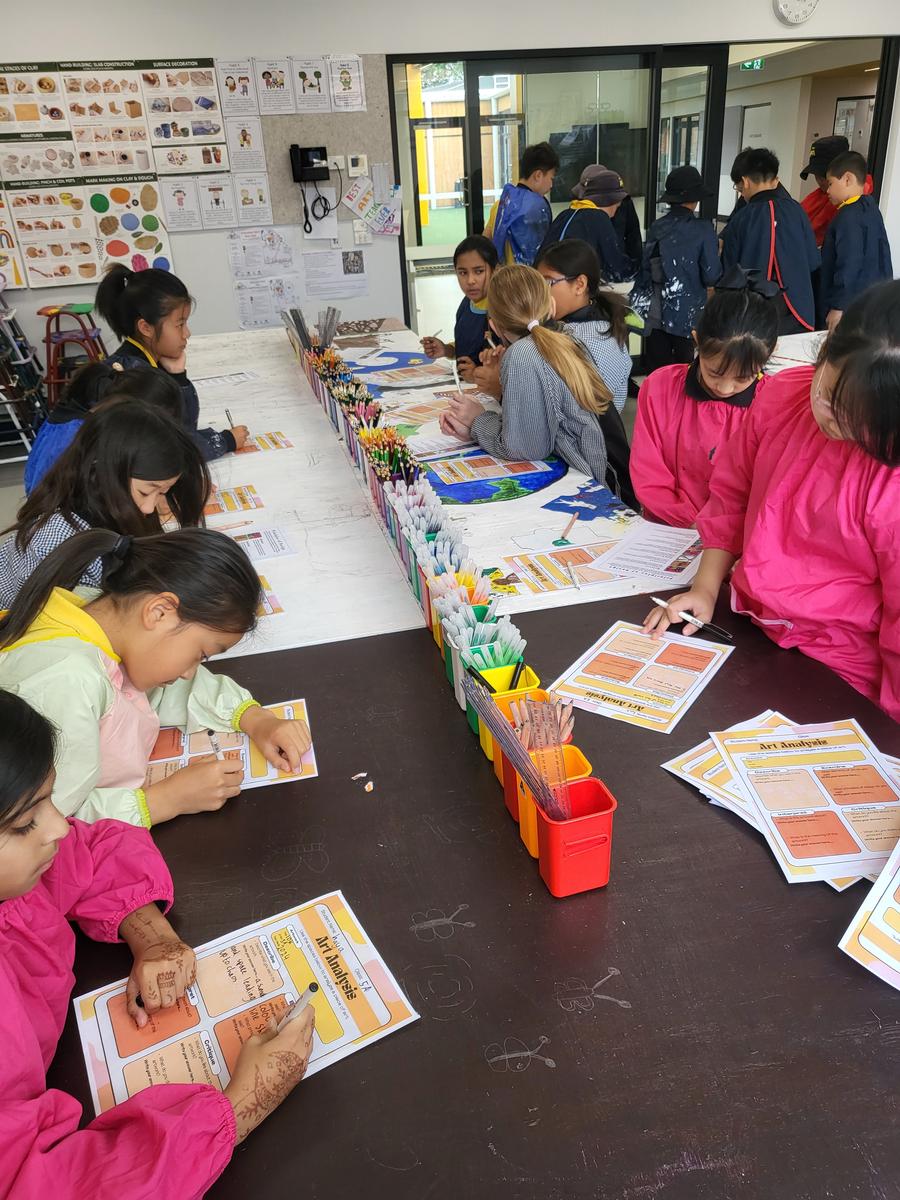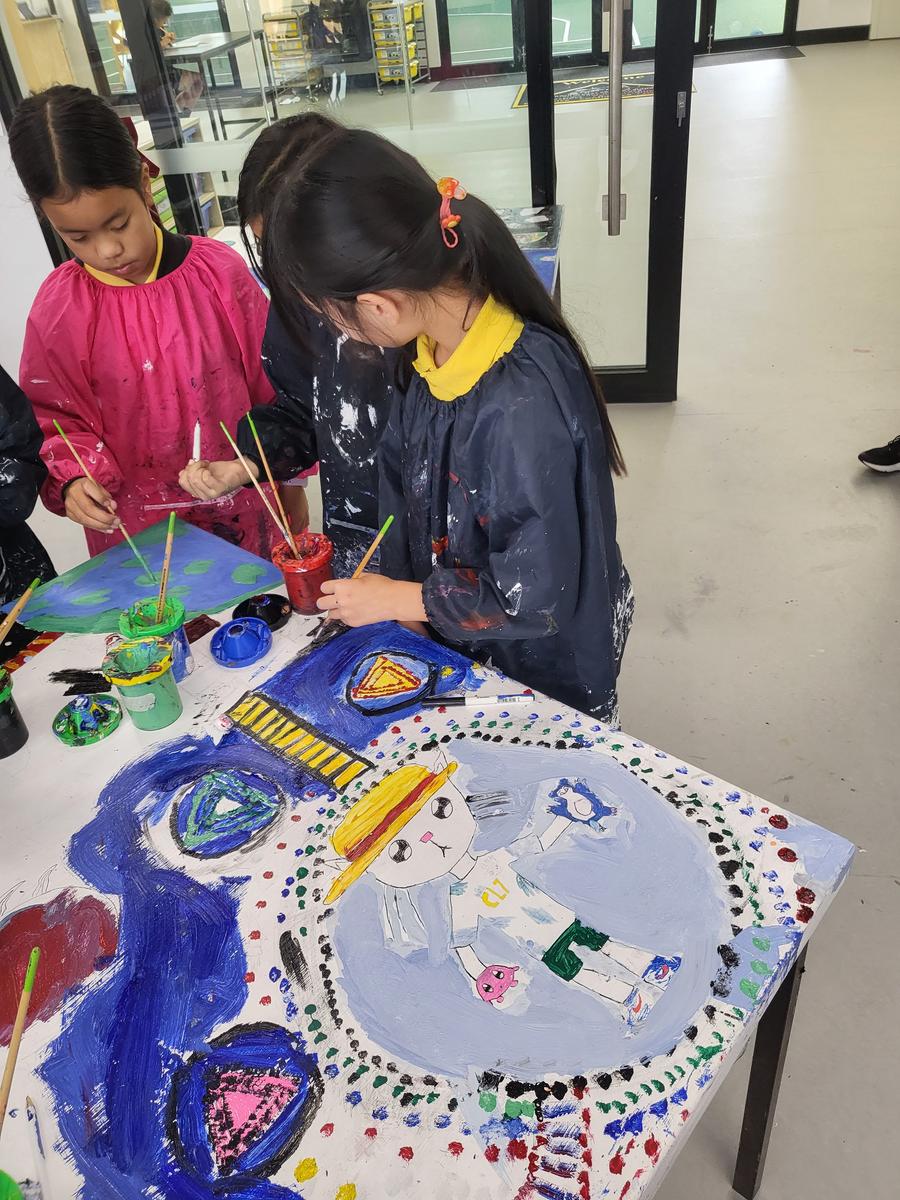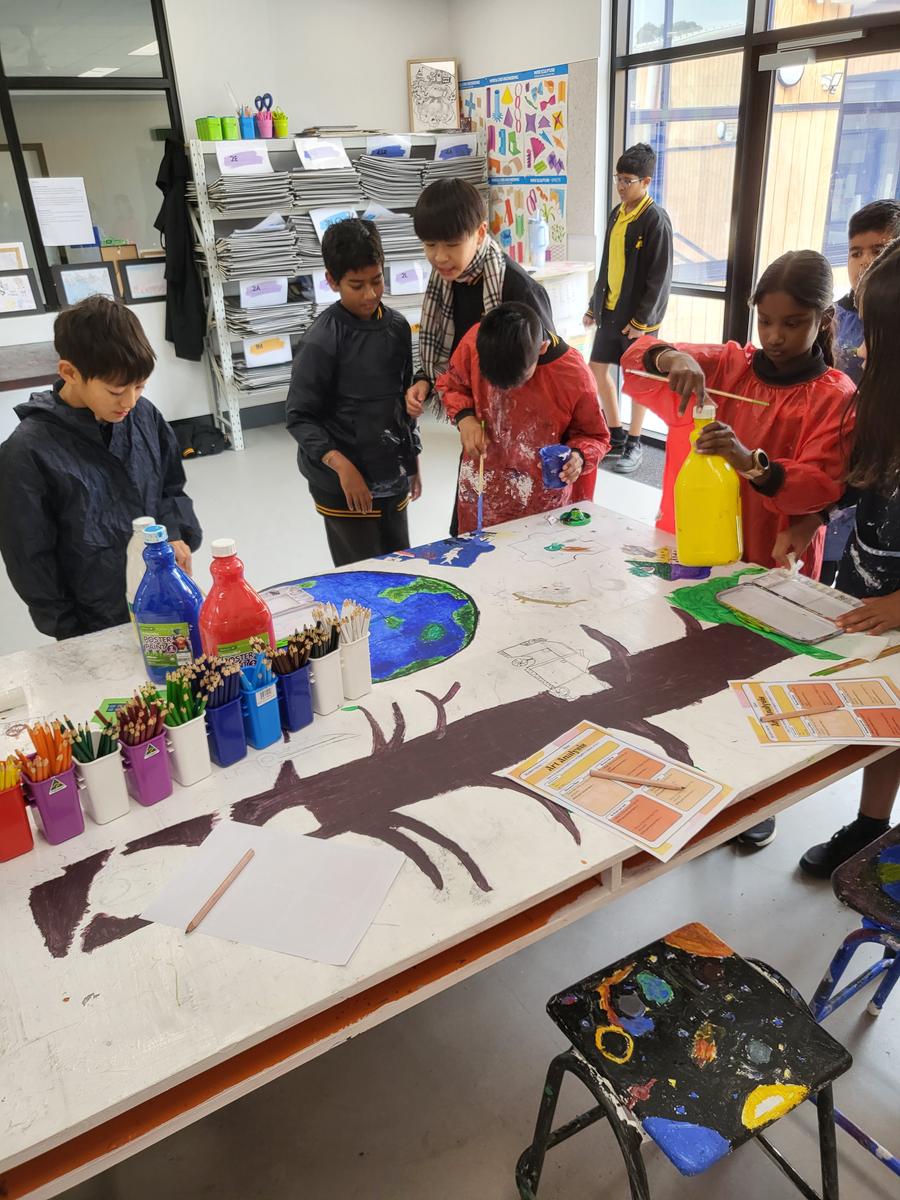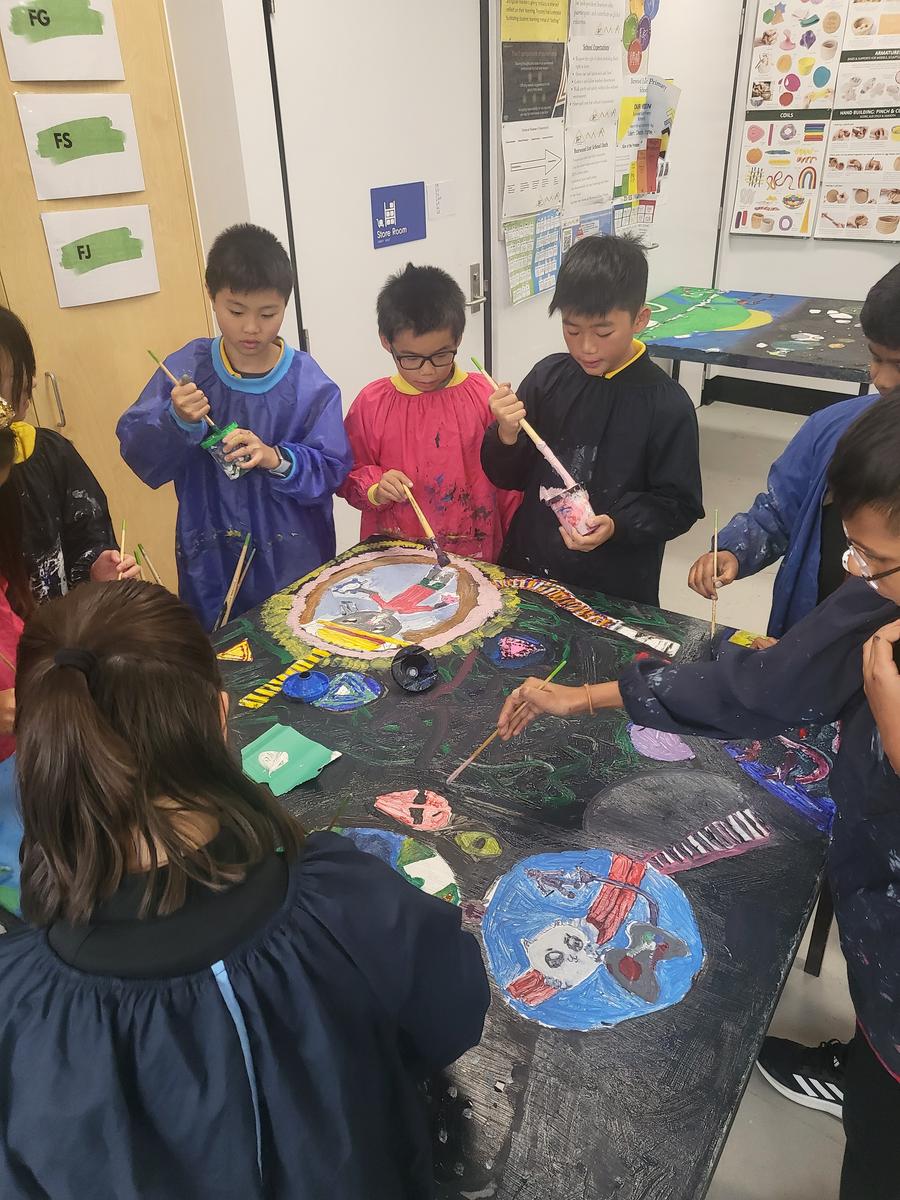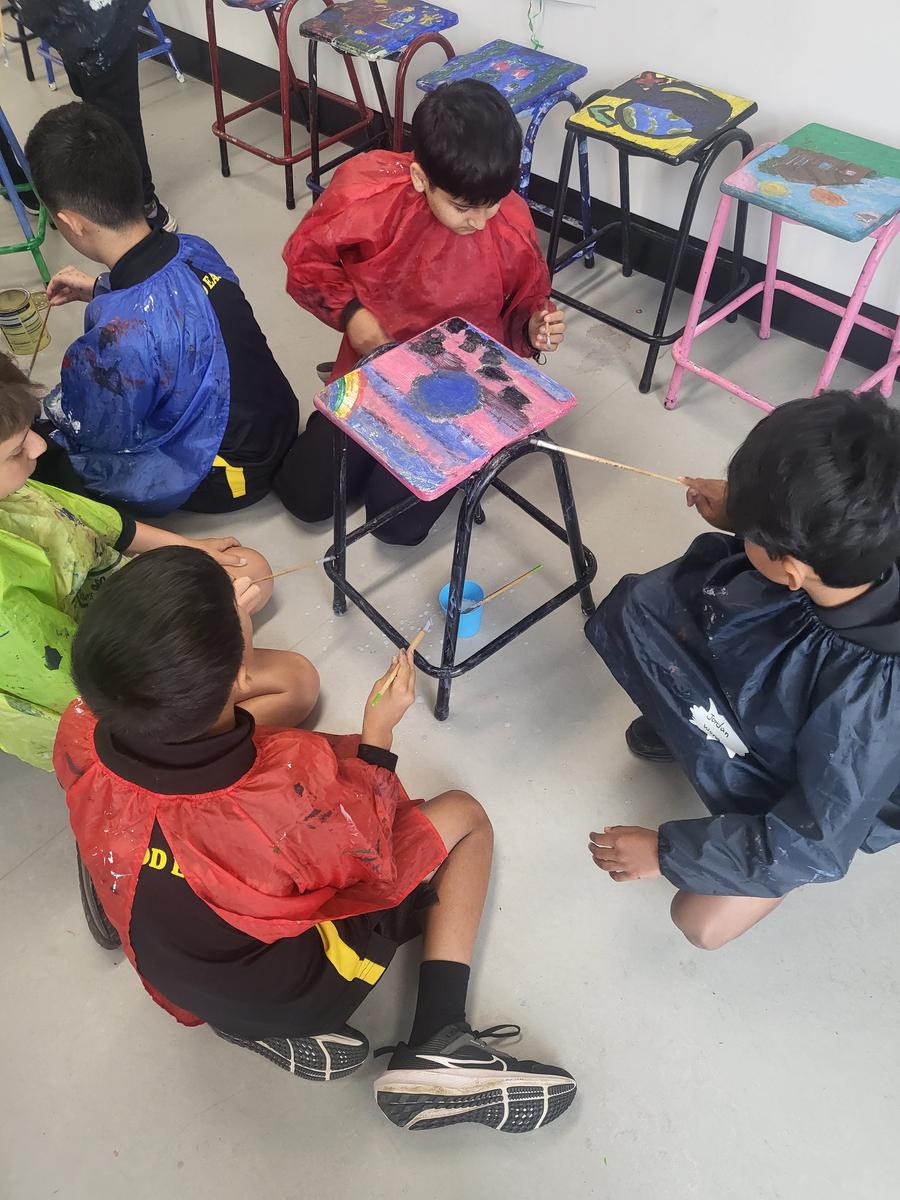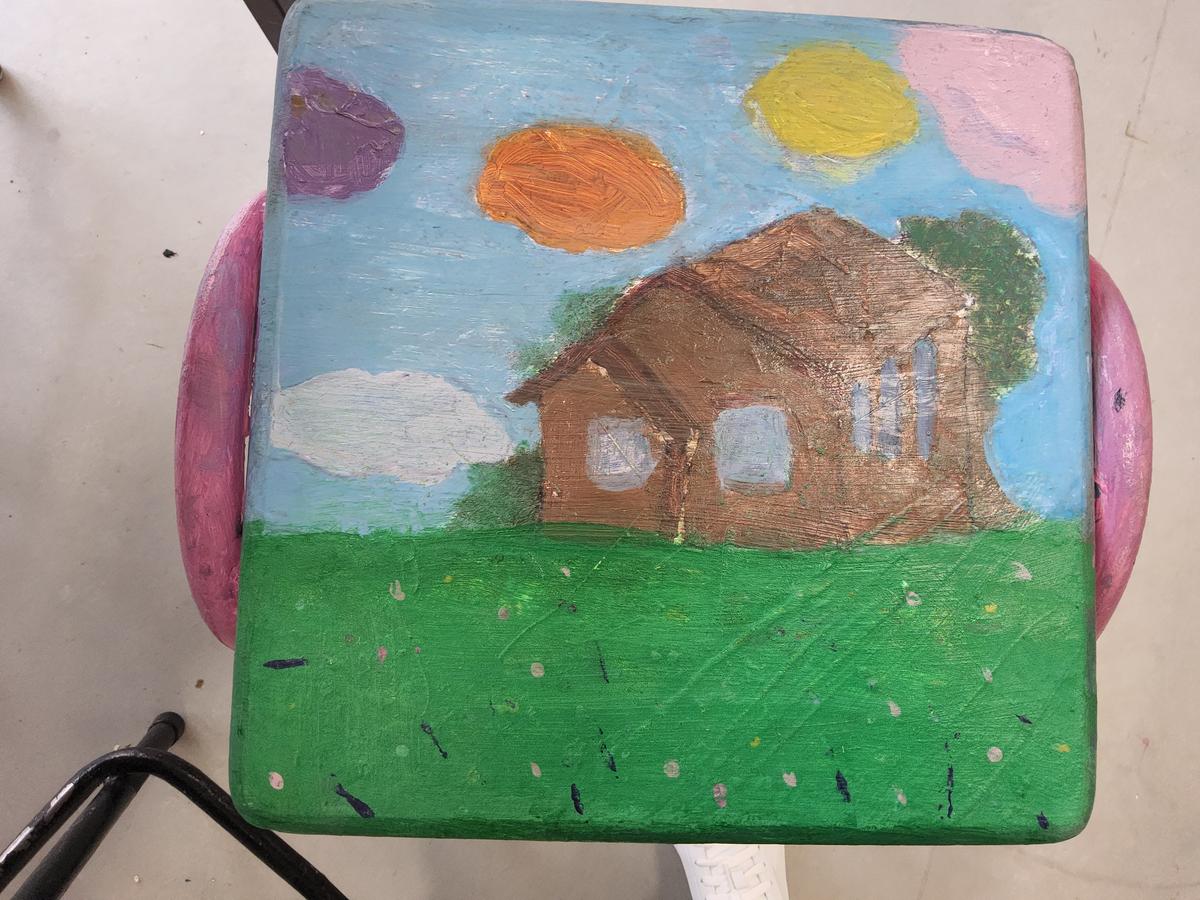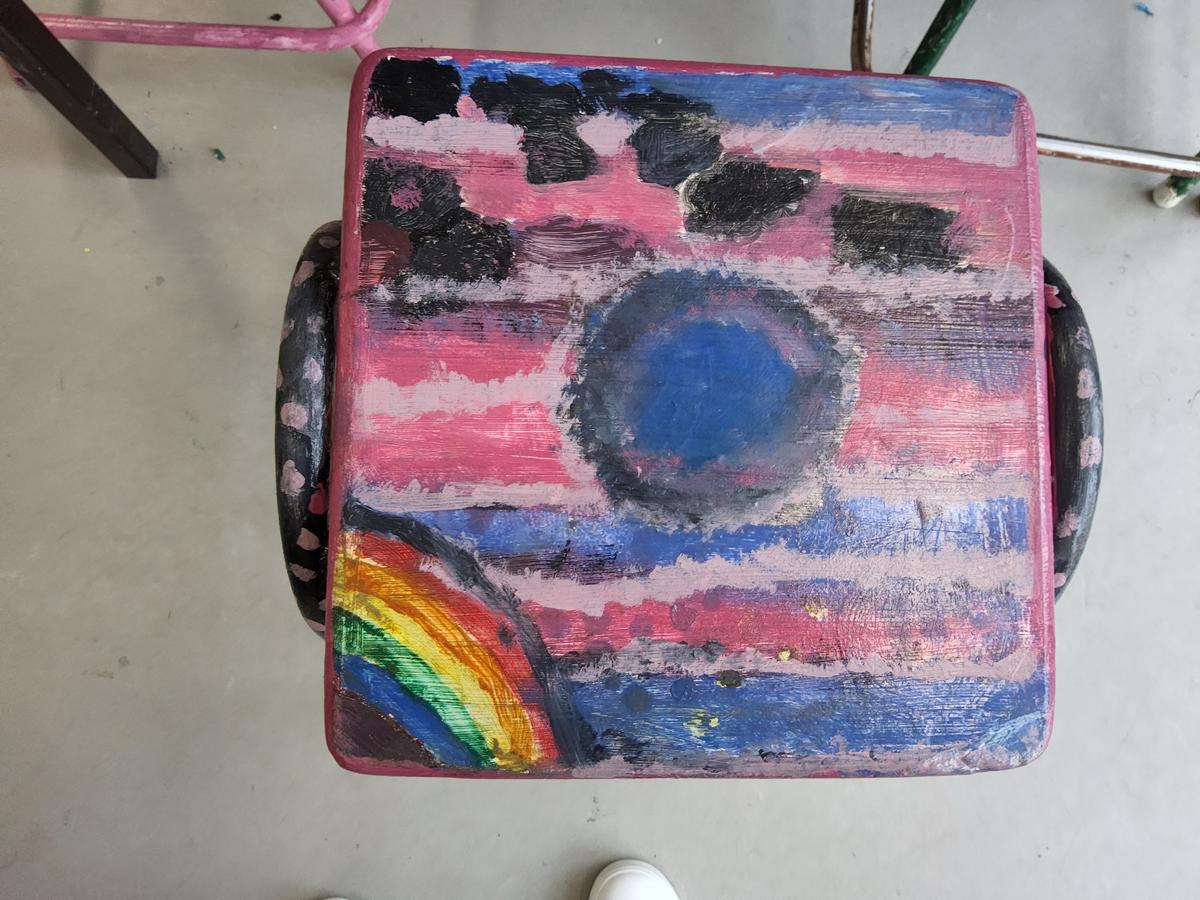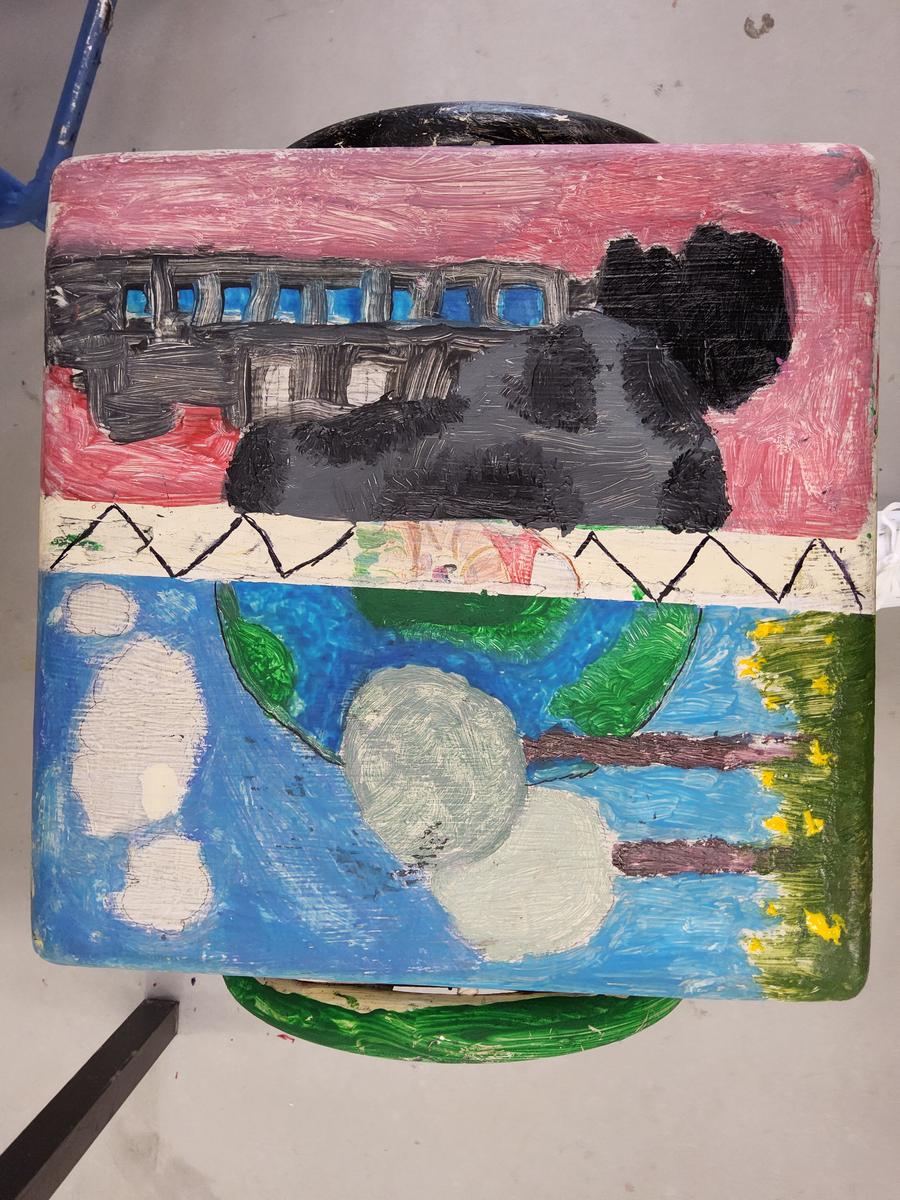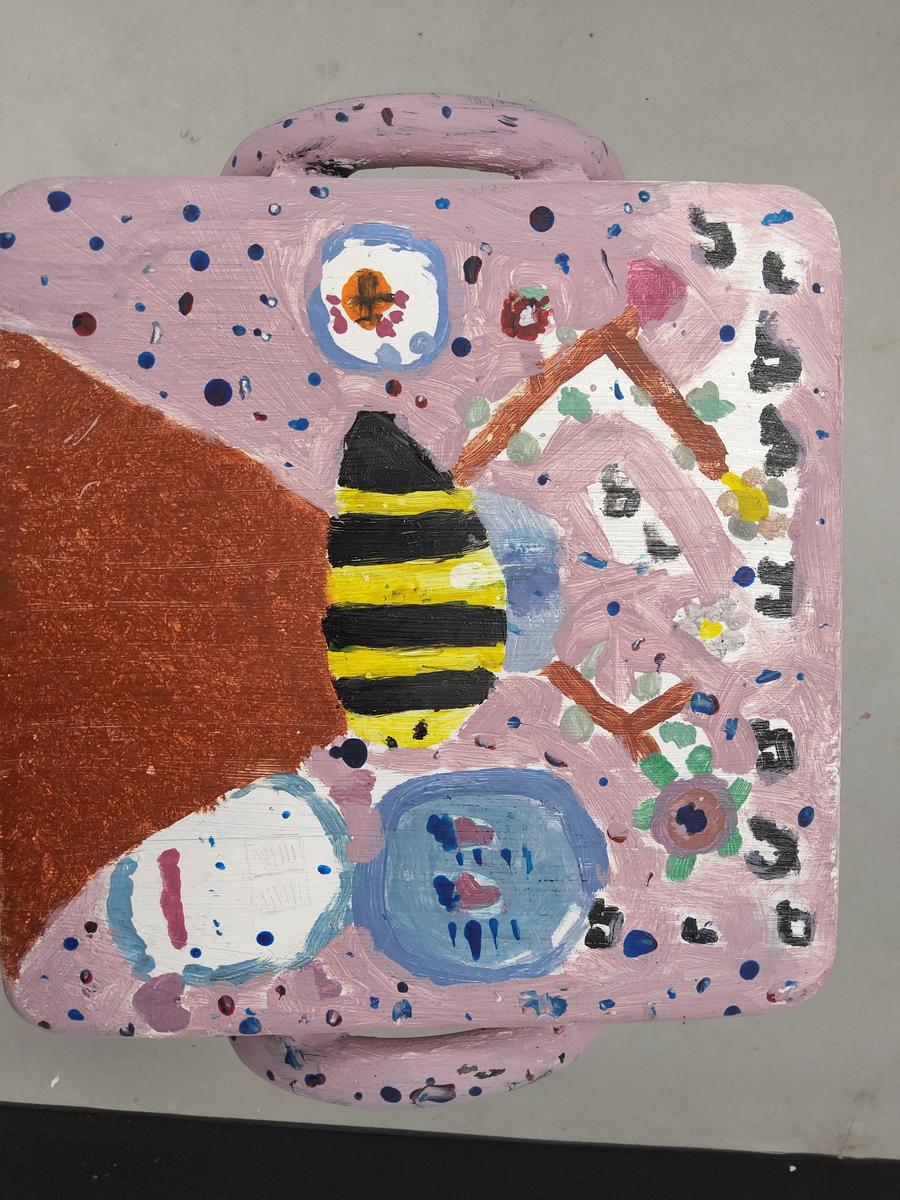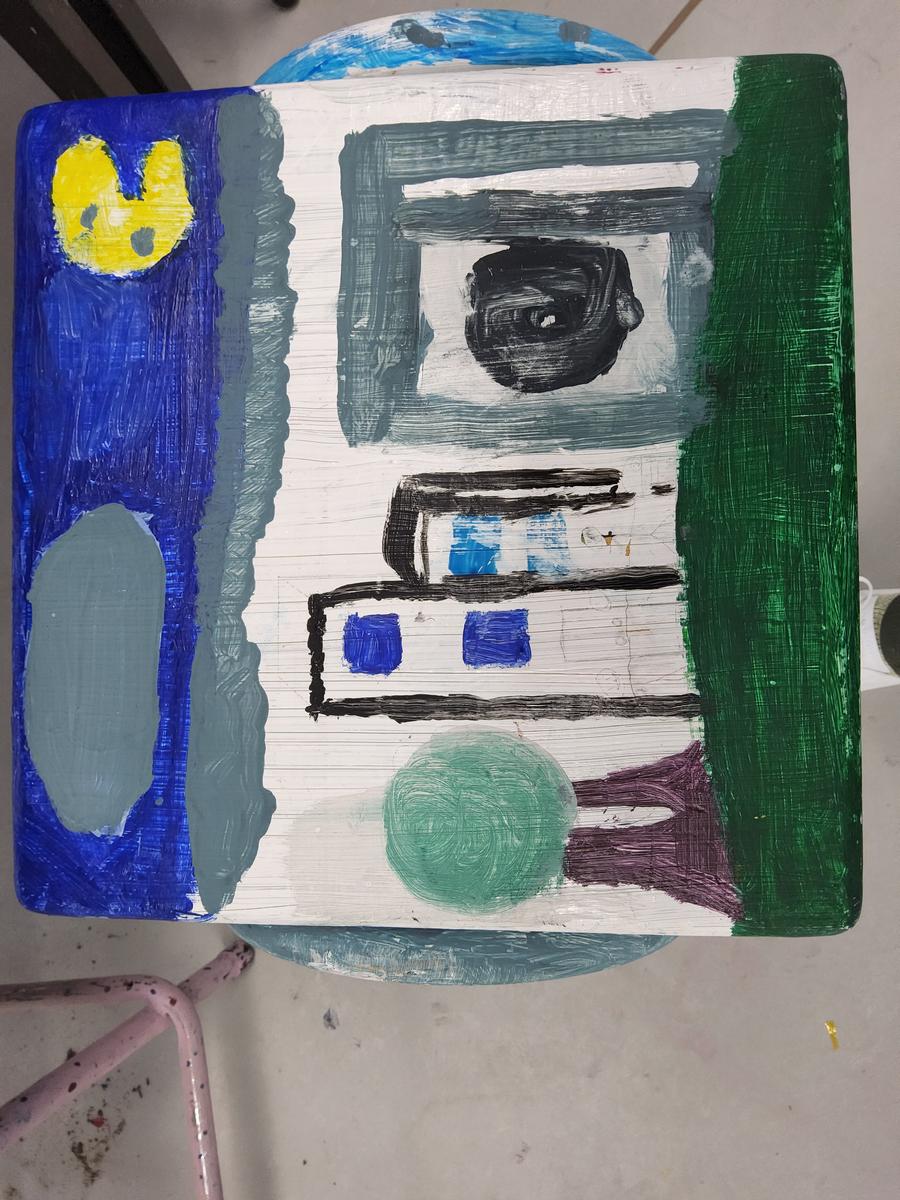Visual Arts
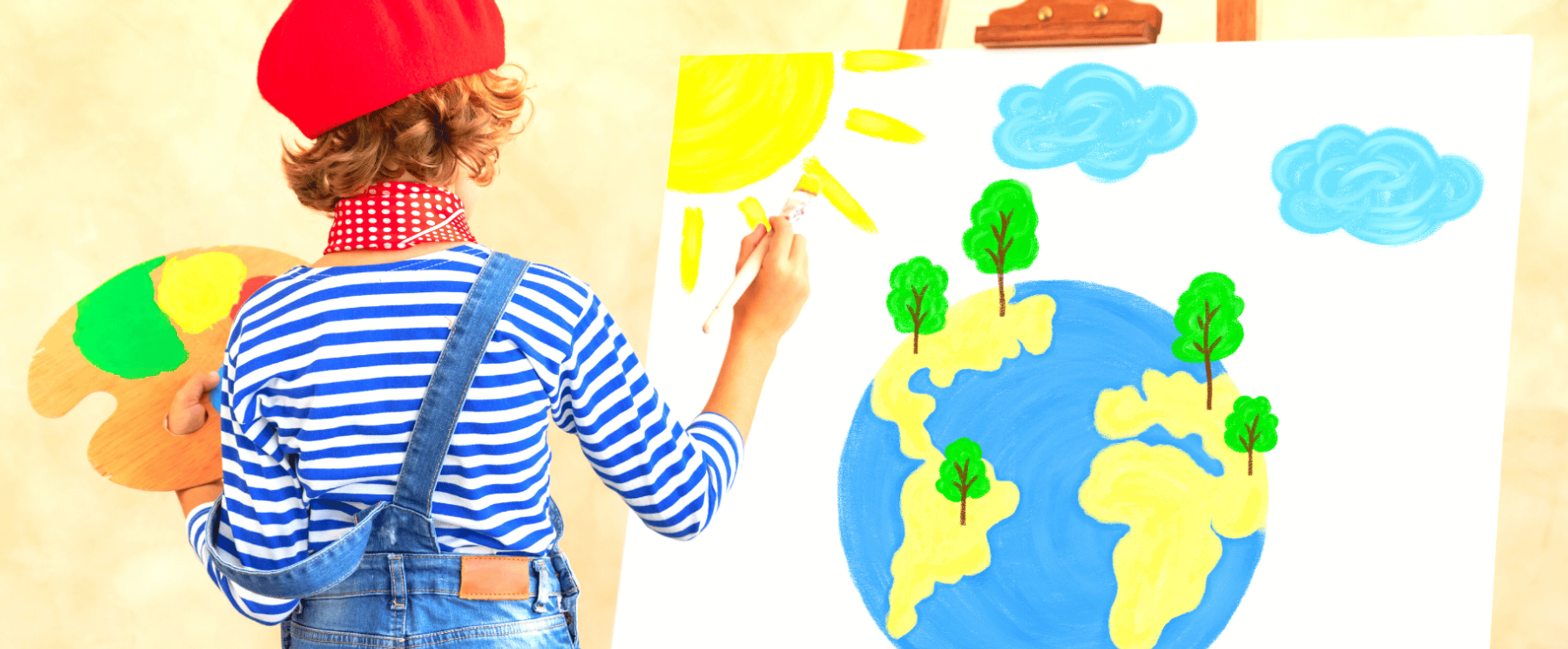
Foundation and Year 1
Students explored a range of materials including, oil pastels, soft pastels, paint, digital technology and natural materials to create various artworks. They investigated how the secondary colours, orange, green and purple, are created by mixing the primary colours, yellow, red and blue. Students investigated how texture can be created with different materials and techniques and how it can make the subject matter appear more realistic. They investigated how the art-making process can be a collaborative experience as well as an outlet to express their individuality. Students expressed their opinions about art, both their own and other’s and supported their opinion by giving reasons.
They investigated Australian art history, identifying the features of the corresponding art movements. Students gathered inspiration from each art movement, and practised using the appropriate techniques, before selecting the elements they liked the best to create an artwork that represented their family’s history. They justified their selection by explaining how the chosen elements assisted in communicating important family events and information. Students were introduced to a range of techniques to construct three-dimensional objects using everyday materials. They followed the design process which includes the need to gather feedback to improve their design before proceeding to complete their product.
Students practised giving constructive feedback, using the ‘feedback sandwich’ approach, which is when an area for improvement is given between two compliments. They explored community art from the local area and produced an artwork that had a message related to ‘Life on Land’ and gathered feedback to ensure the visual elements allowed for the intended message to be effectively conveyed.
Year 2, 3 & 4
Students explored examples of community art from Australia and participated in the co-construction of an artwork with their peers. They followed the design process in order to produce an artwork that had a message related to ‘Healthy Communities’ and gathered feedback from others to ensure the visual elements effectively conveyed the intended message. They experienced how the art making process can be collaborative which requires negotiation skills and resilience. Students analysed artwork and made interpretations about the possible feelings/opinions of the artist, based on the viewer’s experiences, observations and/or imagination.
They used their prior knowledge to create an artwork related to ‘Life on Land’ demonstrating their understanding of how visual art is a powerful communication tool. students were exposed to innovative, interactive and immersive artworks from around the world. Students explored unusual materials and selected the most appropriate for their intended three-dimensional art. They had a go at writing an artist statement about the process they took as well as the final product, identifying how they would improve it next time. They presented their understanding of each art movement to their peers and justified their opinions. Students evaluated, and then selected elements from each art movement that they were inspired by, to incorporate in their artwork.
Year 5 & 6
Students explored examples of community art from around the world and participated in the co-construction of an artwork with their peers for the wider school community. They followed the design process in order to produce an artwork that had a message related to ‘Healthy Communities’ and gathered feedback from others to ensure the visual elements effectively conveyed the intended message. They used their negotiation skills, resilience and the willingness to be flexible so as to achieve the agreed upon success criteria.
Students used their prior knowledge and understanding of the visual art elements to interpret the possible message the artist was trying to convey. They created an artwork that expressed their opinions about a global issue related to ‘Life on Land’ demonstrating their understanding of how visual art is a powerful medium to inform, entertain and persuade.
They created a theme park attraction using a combination of their STEM skills with their Visual Arts knowledge to produce a working attraction which they prepared for display at the Specialist Fair. Students justified their selection by explaining how the chosen elements assisted in expressing key events and their perspectives.
Students in Years 4, 5 and 6, have been diligently working on collaborative murals to freshen up the art, here’s what they had to say;
“I loved painting the picture because it was so fun using different colours and we got to practise our painting skills.” Ivanka 4SR
“I really enjoyed painting the chairs. I hope we are able to do it again.” Kira 4SR
“When designing the art for the chairs, we enjoyed learning about the visual elements and it made us feel very calm and we were amazed by all the things we learned.” Ananya and Olivia M 4SR
“I really enjoyed painting a chair with my group because I got to learn to use colour, texture, shape and size. I also learned to collaborate with my group to make the chair look amazing, even though we encountered a few challenges it still turned out great.” Lucy 5K
“Painting the chair was very fun and exciting. Everyone made a few mistakes but in the end everything went okay. We used elements of art. Everyone agreed on the ideas that we shared.” Isabella 5K
“I was proud when the class agreed to connect all the planets to make a constellation, the end result could have been better, but I am proud of what we have done as a class.” Emilie 5D
“I enjoyed the painting and there were challenges that were hard, but we overcame them by using teamwork.” Lewis 5D
“Near the middle of the process, I thought we would never get it done in time, but then a miracle happened on the last week and we somehow got everything done.” Minh 6L
“During painting it was like it was not going to be finished but I really like the end result.” Hayden 6L
